Furuno USA 9ZWRTR102 Transceiver for Radar User Manual OME 36700 A
Furuno USA Inc Transceiver for Radar OME 36700 A
Contents
- 1. Users Manual 1
- 2. Users Manual 2
- 3. Users Manual 3
- 4. Users Manual 4
- 5. Users Manual 5
Users Manual 4
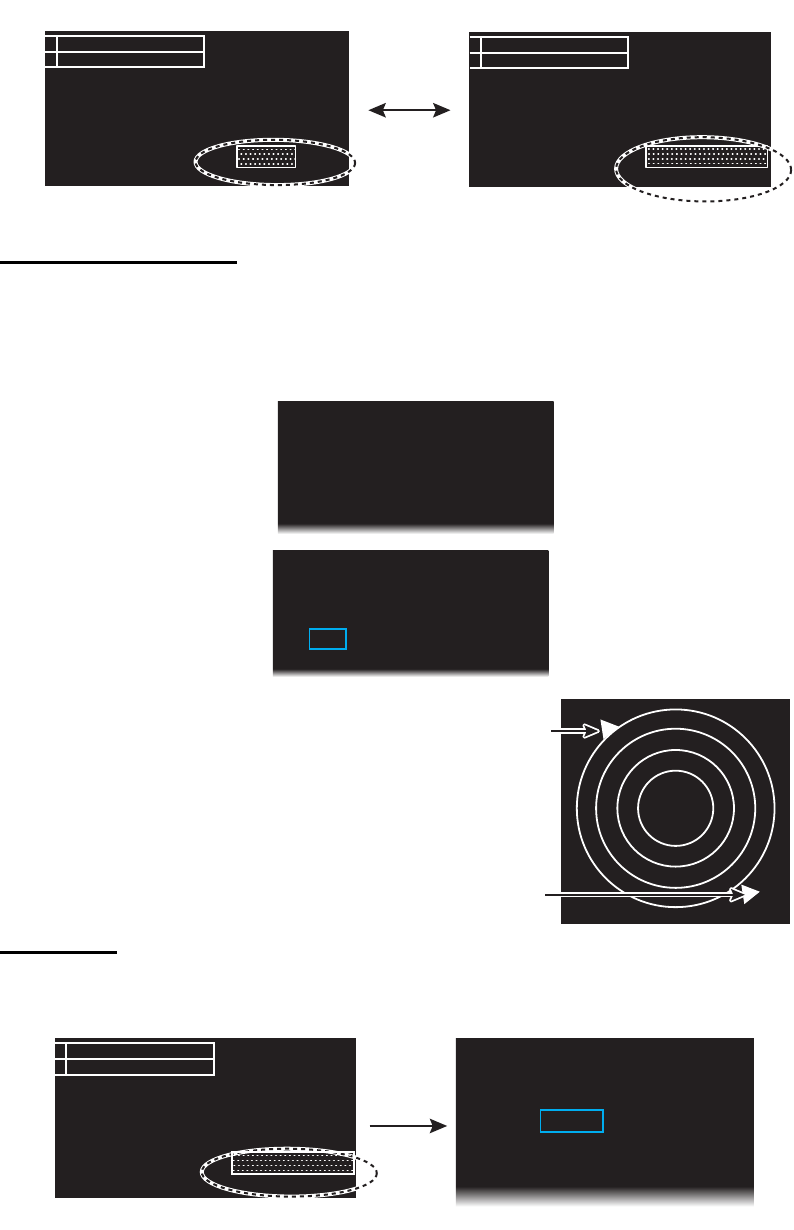
1. OPERATION
1-53
1.33.2 How to show wind data or date alternately
Click the icon shown below to show wind data or date alternately.
Wind direction format
Wind direction format can be selected on the [NAV DATA] menu, with the [WIND]
window.
1. Open [MAIN MENU], click [NAV DATA].
2. Click [WIND].
3. Click [WIND].
4. Click [WIND DIRECTION] then
click [GO TO] or [COME
FROM], referring to the figure
right. [OFF] hides the wind
direction.
Date menu
The [DATA] menu lets you select the time to display, [UTC] or [LOCAL]. Right-click the
Date icon to show the [DATE] window.
• [DATE-TIME]: Select how to display format of date and time, [UTC] or [LOCAL].
Note: If [LOCAL] is selected, the indication [LOCAL] is not shown.
• [LOCAL TIME ADJ]: If [LOCAL] is selected at [DATE-TIME], set the time difference
between local time and UTC time.
Wind speed Date
(at the top right corner on the screen)
Click
CAPT
±300°/min
±180°
SPD BT GPS-F►
DPT AFT ►
CURSOR TTG 18m20s
44. 6km/h
3. 2m
CAPT
±300°/min
±180°
OS POSN
N
CURSOR TTG 18m20s
2. 4m/s
0° 00. 219°
E
0° 00. 397° ►
WINDWIND
6.34NM / 300.3°R
01-sep-2012
►
01-sep-2012
►
6.34NM / 300.3°R
UTC 12:34
1 BACK
2 [PREDICTION]
3 [DEPTH]
4 [WIND]
[WIND]
[WIND]
1 BACK
2 WIND DIRECTION
OFF/COME FROM/GO TO
Wind direction symbol:
[GO TO]
Wind direction symbol:
[COME FROM]
Date icon (at top right corner on the screen)
Right-
click
UTC 12:34
CAPT
±300°/min
±180°
SPD BT GPS-F►
DPT AFT ►
CURSOR TTG 18m20s
6.34NM / 300.3°R
44. 6km/h
3. 2m
01-sep-2012
►
01-sep-2012
►
[DATE]
1 BACK
2 DATE-TIME
UTC/LOCAL
3 LOCAL TIME ADJ
+00:00
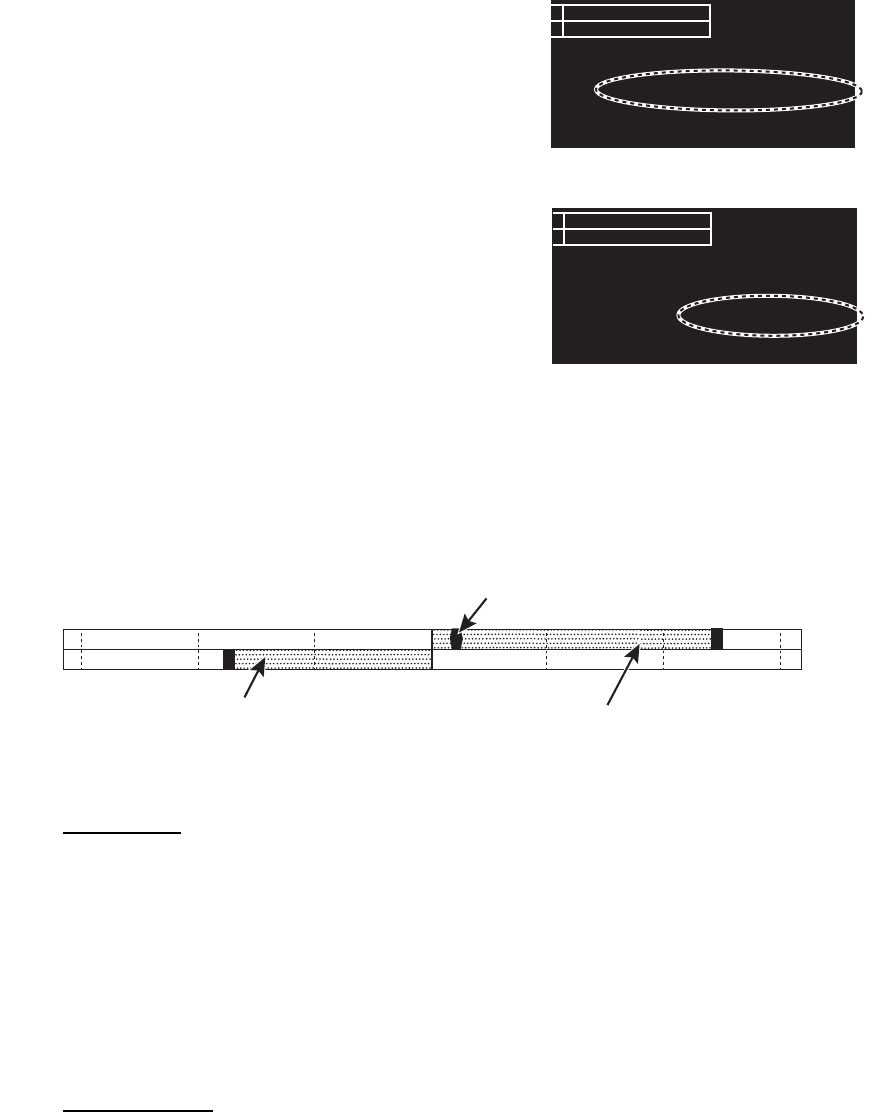
1. OPERATION
1-54
1.33.3 Time to the cursor position
The time from own ship to the cursor
position (TTG: time-to-go) is shown at the
top right corner on the screen.
1.33.4 Cursor position
The cursor position (range and bearing of
cursor from the own ship) is shown at the
top right corner on the screen.
The bearing reference is changed
simultaneously with the EBL1 reference.
To change the cursor position's bearing
reference, click EBL1's bearing reference icon. See section 1.19 for details.
1.33.5 ROT, Rudder and Autopilots Graphs
The ROT (Rate of Turn), RUDDER and AUTOPILOT graphs appear at the top of the
screen.
ROT graph
The ROT graph displays ship’s rate of turn (degrees/min), using the ROT signal fed
from an ROT sensor. There is no NMEA signal and also no indication.
To set the ROT graph scale:
1. Open [MAIN MENU] then click [NAV DATA].
2. Click [ROT SCALE].
3. Click the desired scale among 30 degees, 90 degrees and 300 degrees.
Rudder graph
The rudder graph shows the rudder angle. There is no NMEA signal and also no
indication.
To set the rudder graph scale:
1. Open [MAIN MENU] then click [NAV DATA].
2. Click [RUDDER SCALE].
3. Click the desired scale among 30 degrees, 90 degrees, 120 degrees and 180
degrees.
CAPT
±300º/min
±180º
OS POSN N
CURSOR TTG 18m20s
24m/s
0° 00. 219°
WIND
E0° 00. 397° ►
6.34NM / 300.3°R
CAPT
±300º/min
±180º
OS POSN N
CURSOR TTG 18m20s
2. 4m/s
0° 00. 219°
WIND
E0° 00. 397° ►
6.34NM / 300.3°R
ROT
RUDDER
±300 º/min
±180 º
RUDDER graph
Autopilot graph
ROT graph
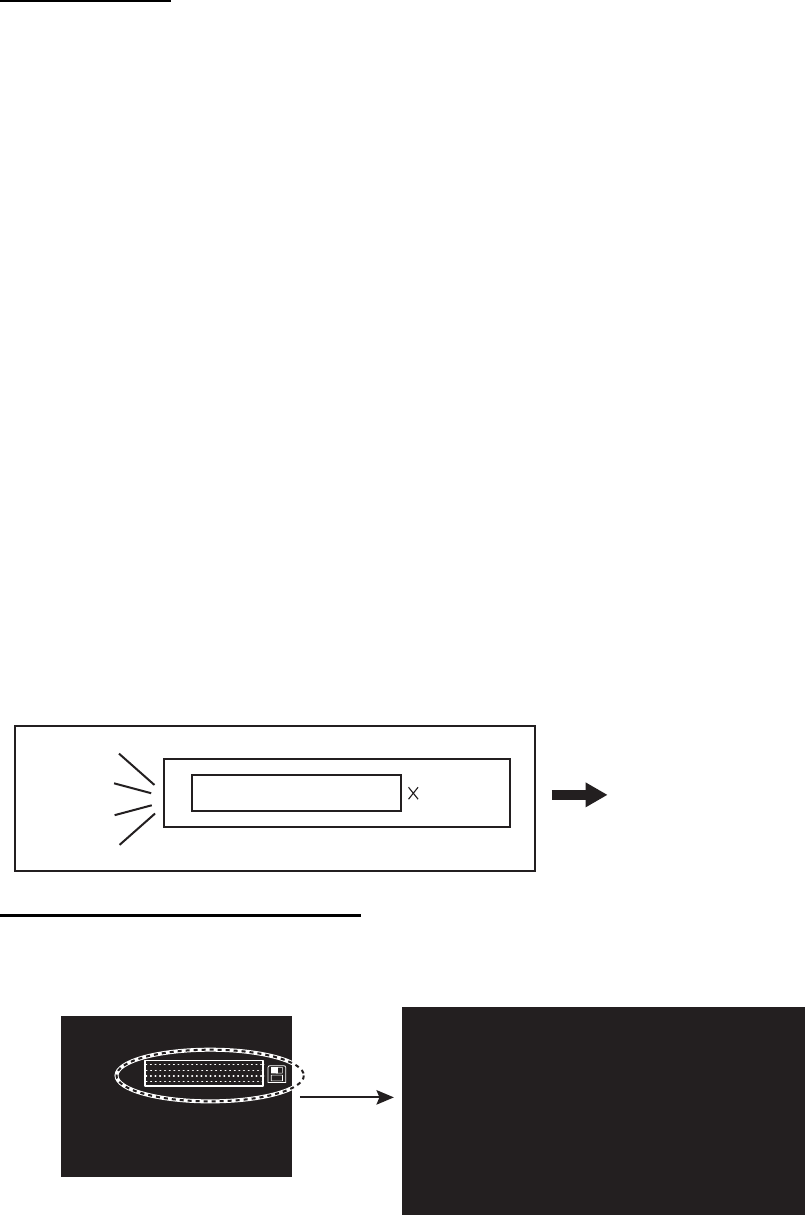
1. OPERATION
1-55
Autopilot graph
1) Follow-up (FU) mode
When the autopilot is in the follow-up mode, the follow-up rudder command is
indicated on the RUDDER scale. In addition, "FOLLOW UP" is indicated at the
top of the screen. In follow-up mode, the autopilot controls the rudder so that actual
rudder angle becomes same as commanded one.
2) Autopilot (AP) mode
When the autopilot is in the "autopilot" mode and a ROT signal is available from
the autopilot, the autopilot graph shows ROT command. The actual ROT
command set on the autopilot is represented by a small circle on the ROT scale.
In addition, " AUTOPILOT" is indicated at the top of the screen. In "autopilot"
mode, the autopilot controls the ROT so that actual heading becomes same as
commanded one.
3) Neither FU nor AP mode
When the autopilot is in neither FU nor AP mode, the autopilot graph shows ROT
command as default.
4) No autopilot or on standby
There is no NMEA signal and also no indication.
1.34 Customized Menus
The customized menu settings of four users are programmed individually. A user can
have the four sets of the menu settings. That is, there are 16 sets of the menu settings.
How to select the customized set
1. Click the [CUSTOM] icon at the bottom right corner on the screen to show the
[CUSTOM MENU] window.
2. Click the required user name.
3. Click the required menu set.
4. Click outside the menu window to close the menu.
Customized menu settings 4 sets
USER 1
USER 2
USER 3
USER 4
16 sets
Click
FTC 1
IR 1
ES 2
EAV 3
TRAIL►
2.50sec
00m03s
REL
ON
CUSTOM3-4►
CUSTOM3-4►
1 BACK
2 USER NAME 1
CUSTOM1-1/
CUSTOM1-2/
CUSTOM1-3/
CUSTOM1-4
3 USER NAME 2
CUSTOM2-1/
CUSTOM2-2/
CUSTOM2-3/
CUSTOM2-4
4 USER NAME 3
CUSTOM3-1/
CUSTOM3-2/
CUSTOM3-3/
CUSTOM3-4
5 USER NAME 4
CUSTOM4-1/
CUSTOM4-2/
CUSTOM4-3/
CUSTOM4-4
[CUSTOM MENU]
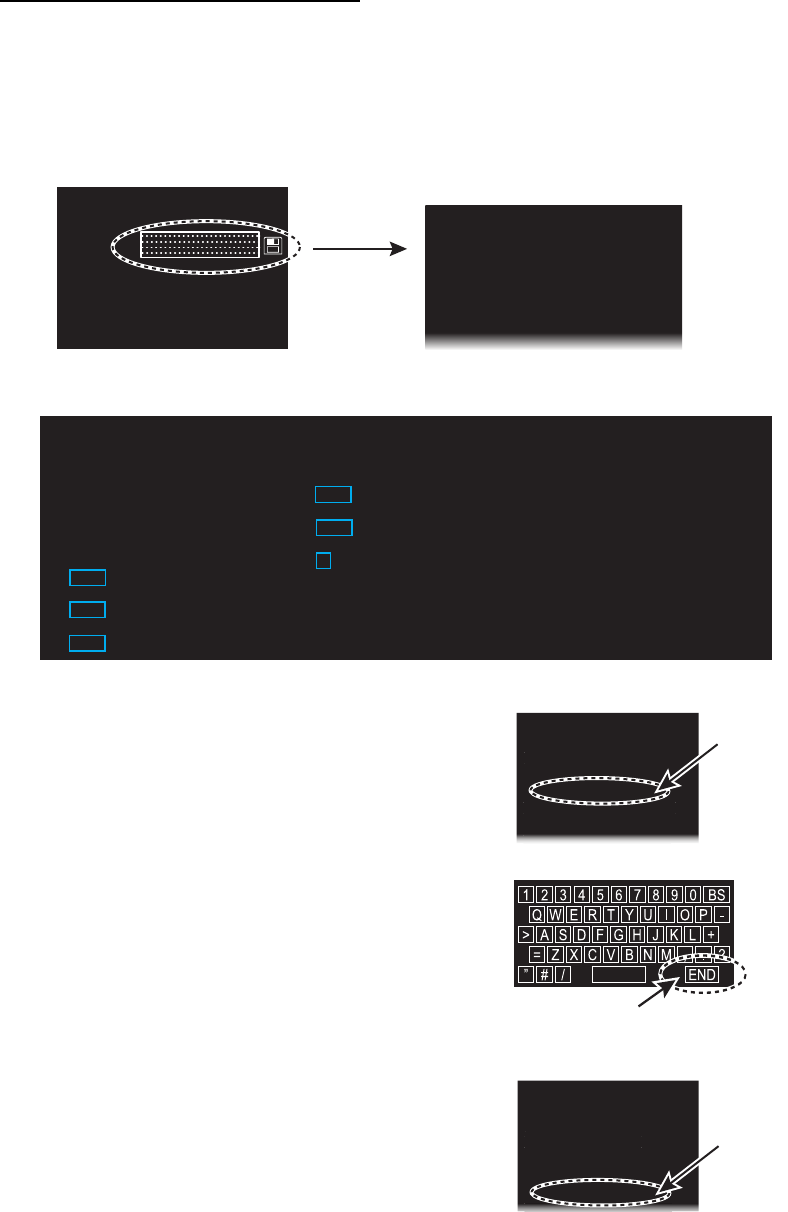
1. OPERATION
1-56
How to edit the [CUSTOM MENU]
Note: The [CUSTOM1-1] setting is fixed as a default setting. You can edit the setting,
but when the system is turned off, the default setting is restored. To save a customized
set, select a setting other than [CUSTOM1-1].
1. Right-click the [CUSTOM] icon at the bottom right corner on the screen to show
the [CUSTOM MENU] window.
2. Click [EDIT].
3. Click [USER NAME] to edit.
4. To edit the name, click the name column
then enter the name with the software
keyboard. Click the [END] button to finish.
• Change the digit: Rotate scrollwheel.
• Delete a character: Use the [BS] button on
the software keyboard.
5. Click [USER COMMENT] to edit. The
editing procedure is the same as that for
[USER NAME]. Refer to step 4
6. To edit the name, press the name column
then enter the name with the software keyboard. Click the [END] button to finish.
Right-
click
FTC 1
IR 1
ES 2
EAV 3
TRAIL
►
2.50sec
00m03s
REL
ON
CUSTOM3-4
►
CUSTOM3-4
►
[CUSTOM MENU]
1 BACK
2 [EDIT]
3 [PRESET]
[EDIT]
1 BACK
2 USER NAME
USER NAME 1
3 USER COMMENT
CUSTOM4-4
4 [GAIN/STC/RAIN]
5 FTC
OFF/1/2
6 INT REJECT
OFF/1/2/3
7 ECHO STRETCH
OFF/1/2/3
8 ECHO AVERAGE
OFF/1/2/3
9 WIPER
OFF/ON
10 VIDEO CONTRAST TYPE
A/B/C/D
11 [STC CURVE]
12 LOW LEVEL ECHO
0
13 TT ECHO LEVEL
13
14 [PULSE WIDTH (RIVER)]
16 SAVE & QUIT
#15 [PULSE WIDTH (SEA)] for [SEA] mode instead of #14
[EDIT]
1 BACK
2
US
ER NAME
US
ER NAME
1
3 USER COMMEN
T
C
U
S
T
O
M4-4
4 [GAIN/STC/RAIN]
Name
column
[END] button
[EDIT]
1 BACK
2
US
ER NAME
US
ER NAME
1
3 USER COMMEN
T
C
U
S
T
O
M4-4
4 [GAIN/STC/RAIN]
Name
column
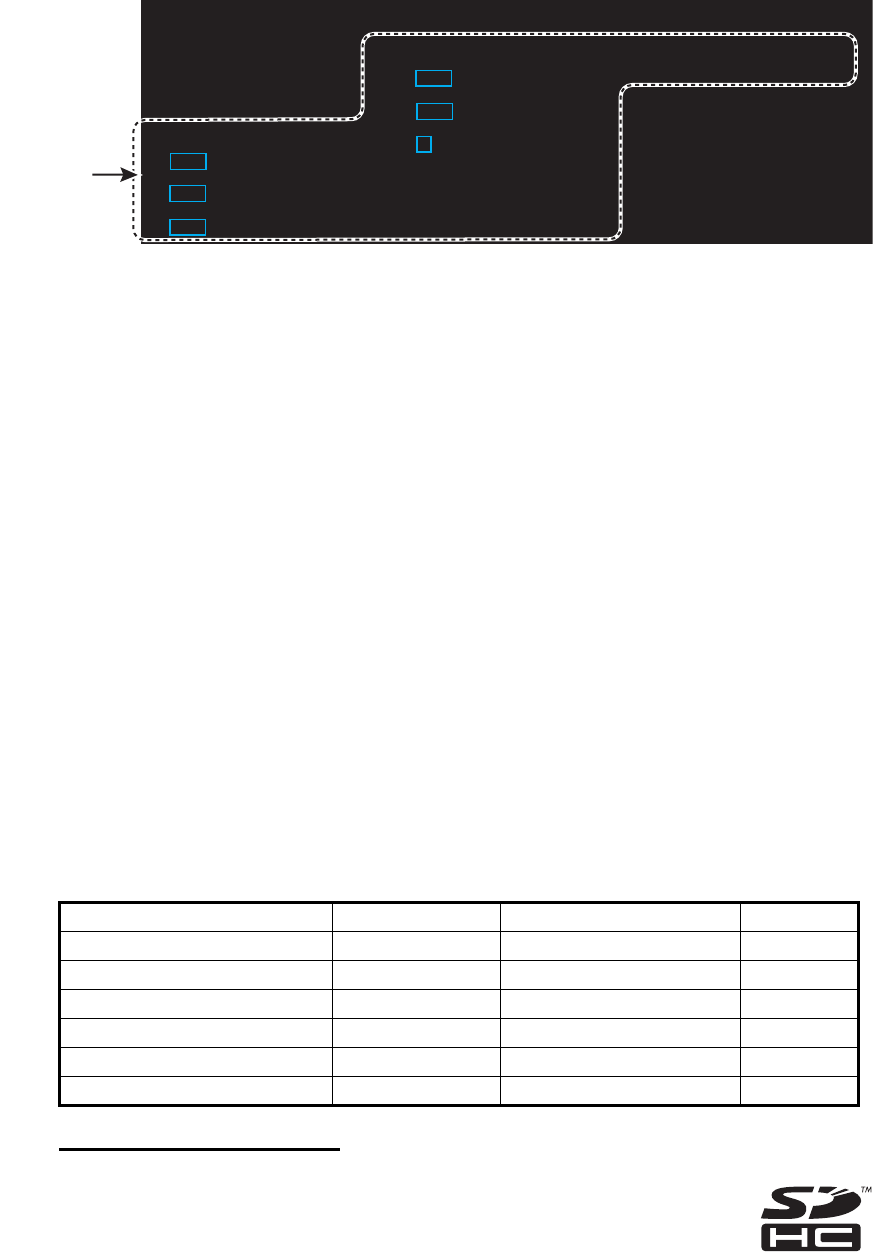
1. OPERATION
1-57
7. Click the menu to set in the [EDIT] menu.
8. Click the setting for each menu.
9. Click [SAVE & QUIT] to save the setting.
1.35 SD Cards
The SD card (including SDHC card) stores the mark data etc.
1.35.1 About the SD cards
• Use SD cards carefully. Wrong use can damage the card and destroy its contents.
• Make sure the cover of the card drive is closed at all times.
• Remove a card with only your fingers. Do not use metal tools (like tweezers) to
remove the card.
• Do not remove a card during the reading of the card or writing to the card.
• If there is water at the bottom of the card cover, DO NOT open the cover. Remove
the water with a dry cloth completely and then open the cover.
• The SD cards with the SD or SDHC logo can be used (max. 32 GB). Some SD cards
may not work correctly depending on the card type or maker. The memory cards in
the table below have been tested and confirmed:
How to format an SD card
You need to format an SD card for use with your PC. If the card
becomes corrupted, format the card with a formatting program that is
compatible with the specifications of the SD card. The SD Memory
Card Formatting Software made by Panasonic is an example.
Type Capacity Maker Class
SDSDB-8192-J95A 8 GB SanDisk 4
SDSDX-008G-J95 8 GB SanDisk 10
SD-E008G4 8 GB TOSHIBA 4
RP-SDW08GJ1K 8 GB Panasonic 10
SDSDX-016G-J35 16 GB SanDisk 10
RP-SDWA16GJK 16 GB Panasonic 10
[EDIT]
1 BACK
2 USER NAME
USER NAME 1
3 USER COMMENT
CUSTOM4-4
4 [GAIN/STC/RAIN]
5 FTC
OFF/1/2
6 INT REJECT
OFF/1/2/3
7 ECHO STRETCH
OFF/1/2/3
8 ECHO AVERAGE
OFF/1/2/3
9 WIPER
OFF/ON
10 VIDEO CONTRAST TYPE
A/B/C/D
11 [STC CURVE]
12 LOW LEVEL ECHO
0
13 TT ECHO LEVEL
13
14 [PULSE WIDTH (RIVER)]
16 SAVE & QUIT
#15 [PULSE WIDTH (SEA)] for [SEA] mode instead of #14
Menus to
set

1. OPERATION
1-58
How to set an SD card
The processor unit has two slots for SD cards. The [SD-1] is upper slot and [SD-2] is
lower.
1. Pull the tab on the card drive on the processor unit to open the card drive.
2. Put the SD card in the either card drive, [SD-1] or [SD-2], with the label upward. If
the card does not set easily, do not use force.
3. Push the card until the card is in position.
How to remove an SD card
To remove an SD card, select [SD-1] or [SD-2] from the [REMOVE EXTERNAL
MEDIA] menu. There are two methods to open [REMOVE EXTERNAL MEDIA] as
follows.
• [MAIN MENU]–[FILES]–[REMOVE EXTERNAL MEDIA]
• [MAIN MENU]–[CAPTURE]–[REMOVE EXTERNAL MEDIA]
1. On [FILES] or [CAPTURE] menu, select [REMOVE EXTERNAL MEDIA].
2. Select the SD card to remove, [SD-1] or [SD-2].
Note: Select the same card as the card selected on the [DRIVE SELECT] menu.
3. Pull the tab on the card drive cover to open the card drive.
4. Push the card to release the card from the card drive.
5. Remove the card with your fingers then close the cover.
Note: Always remove an SD card by this method to prevent non-recognition of the
card the next time when it is inserted. If a card is not recognized, insert the card again
and do the above operation.
1.35.2 How to save and replay the data
All SD card operations begin from the [FILES] menu.
The [FILES] menu is available in stand-by mode.
The data witch is saved in the FR-1908V-BB do not
have the compatibility with other models. Do not let
the data read to the other models, and also do not let
other models read the data of the FR-1908V-BB. It
may cause the malfunction.
Note: All settings, except for [BRILL 1-1] and
[CUSTOM 1-1], are stored when the radar is turned off. If you want to keep all settings,
including [BRILL 1-1] and [CUSTOM 1-1], save the settings to an SD card before
turning off the radar. Then replay the saved settings after turning on the radar.
• [DRIVE SELECT]: Click the drive [SD-1] or [SD-2] to use. The [SD-1] is upper slot
and [SD-2] is lower.
• [DRIVE INFO]: Confirm the remaining capacity of the SD card selected at
[DRIVE SELECT].
[FILES]
1 BACK
2 DRIVE SELECT
SD-1 /SD-2
3 [DRIVE INFO]
4 [SAVE DATA]
5 [REPLY (READ) DATA]
6 [DELETE DATA]
7 REMOTE EXTERNAL MEDIA
SD-1 /SD-2

1. OPERATION
1-59
• [SAVE DATA]: Save the file stored on the following file group set at [NAME]. Set the
name with the software keyboard. Click the [END] key to complete the name setting.
[MARK/LINE]* (see the figure shown right)
[SETTING DATA]
[ALARM HISTORY]
[LOG FILE]
• [REPLAY (READ) DATA]: Select the data group in the SD card, [MARK/LINE]* or
[SETTING DATA], then select the file to replay (read).
• [DELETE DATA]: Select the data group to delete from SD card, [MARK/LINE]*,
[SETTING DATA], [ALARM HISTORY] or [LOG FILE], then select the file to delete.
• [REMOVE EXTERNAL MEDIA]: Select the SD card ([SD-1] or [SD-2]) to remove
from the card slot safely.
Note: Select the same card as the card selected on the [DRIVE SELECT] menu.
*: [RIVER] mode only
1.36 How to Set Menu and Icon Behavior
1.36.1 Auto closing of menu window
In the [SEA] mode, the menu window can be set to close automatically if there is no
menu operation within the specified period.
You can close the menu window automatically after a certain period with no operation.
Note: This function is for the [SEA] mode only.
1. Open [MAIN MENU], click [DISPLAY].
2. Click [MENU].
3. Click [AUTO-CLOSING].
Note: In the [RIVER] mode, auto closing is fixed
to [ON]. Go to step 5 to select the closing time.
4. Click the [ON] or [OFF] as applicable.
5. Click [AUTO-CLOSING TIME].
6. Click the appropriate time to close the menu window automatically among 5 sec,
10 sec and 20 sec.
7. Click outside the menu window to close the menu.
[MARK/LINE]
1 BACK
2 NAME
M0000000
[END] key
[MENU]
1 BACK
2 AUTO-CLOSING
OFF/ON
3 AUTO-CLOSING TIME
5sec/10sec/20sec

1. OPERATION
1-60
1.36.2 Icons
You can show or hide some labels and auto hide them after the specified period
elapsed.
How to select the menu icons to display
1. Open [MAIN MENU], click [DISPLAY].
2. Click [HIDDEN ICON].
3. Click each item (from 4 [RANGE] to 13 [DOCKING]) then click [ON] to display the
icon, or [OFF] to hide the icon.
4. Click outside the menu window to close the menu.
How to hide the menu icons automatically
1. Open [MAIN MENU], click [DISPLAY].
2. Click [HIDDEN ICON].
3. Click [AUTO-HIDDEN].
4. Click [ON] to enable automatic hiding of the icons. Any icon selected to [OFF]
(on [HIDDEN ICON]) is automatically hidden.
5. Click [AUTO-HIDDEN TIME].
6. Click the appropriate time to hide the menu icons automatically among 5 sec, 10
sec and 20 sec.
7. Click outside the menu window to close the menu.
[HIDDEN ICON]
1 BACK
2 AUTO-HIDDEN
OFF/ON
3 AUTO-HIDDEN TIME
5sec/10sec/20sec
4 RANGE
OFF/ON
5 MODE
OFF/ON
6 NAV DATA
OFF/ON
7 MARK
OFF/ON
8 BRILL/COLOR
OFF/ON
9 TT/AIS
OFF/ON
10 ECHO
OFF/ON
11 GAIN/STC/RAIN
OFF/ON
12 EBL/VRM
OFF/ON
13 DOCKING
OFF/ON
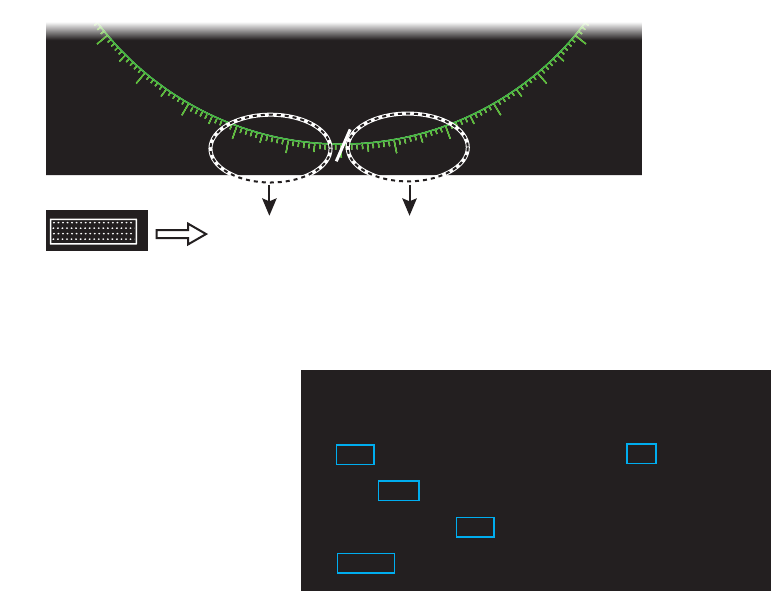
1. OPERATION
1-61
1.37 Other Features
1.37.1 Guidance box (Help function)
The Guidance box provides operating guidance for a cursor-selected item. You can
show or hide the guidance as follows:
1. Open [MAIN MENU], click [CONFIGURATION].
2. Click [OPERATION].
3. Click [GUIDANCE].
4. Click [ON] or [OFF] as appropriate.
5. Click outside the menu window to close the menu.
1.37.2 Menu transparency
You can make the menu window transparent or opaque as follows:
Note: Alpha blending technology is used for transparency effects.
1. Open [MAIN MENU], click [DISPLAY].
2. Click [TRANPARENCY].
3. Click [ON] or [OFF] as appropriate.
[ON]: Menu window is transparent.
[OFF]: Menu window is opaque. Echoes are hidden behind the menu.
4. Click outside the menu window to close the menu.
AIS LIST
MENU
OPEN
AIS/LIST
LIST
►
LIST
►
Selected icon
(ex: LIST icon for AIS)
Function with
left-click
Function with
right-click
(at the bottom of the screen)
[OPERATION]
1 BACK
2 REF POINT
ANT /CCRP
3 KEY BEEP
OFF /LOW/MID/HIGH
4 OWN SHIP VECTOR
OFF /COURSE/HDG
5 CURSOR SIZE
SMALL /LARGE
6 GUIDANCE
OFF /ON
7 [TOUCH-PAD]
8 [POINTING-DEVICE]
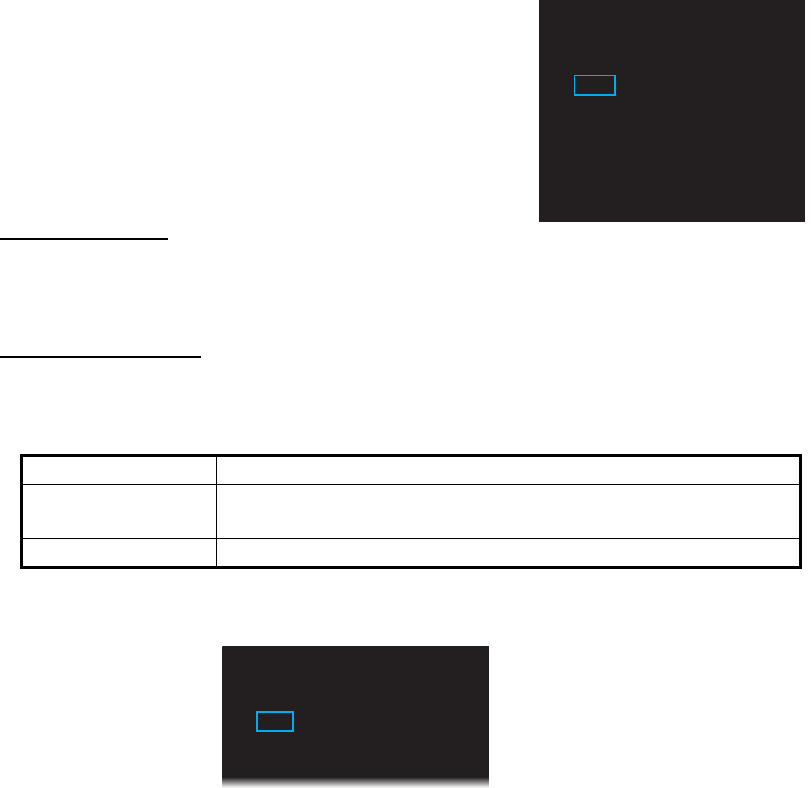
1. OPERATION
1-62
1.37.3 Display capture
You can capture the screen shots to replay them on
the PC. The setting for the display capture is set on
the [CAPTURE] menu. To open the [CAPTURE]
menu, open [MAIN MENU] then click [CAPTURE].
The [CAPTURE] menu is available in the stand-by
mode.
Manual capture
You can capture the screen manually by clicking the [CAPT] icon. The screen shots
captured are saved to the SD card.
Automatic capture
Automatic capture functions to save images in two data groups ([NORMAL], [FAST])
automatically. The captured data are automatically saved to the SD card.
1. Open [MAIN MENU], click [CAPTURE].
2. Click [AUTO CAPTURE].
3. Click [AUTO CAPTURE] then [ON].
4. Click [INTERVAL].
5. Set the time interval for the capture. The setting range is from 1 min to 999 min.
6. Click outside the menu window to close the menu.
Data group Contents of files
NORMAL Captured files at specified interval set in the [INTERVAL]
menu, for the last 24 hours.
FAST Captured files at 10 seconds interval, for the last one hour.
[CAPTURE]
1 BACK
2 DRIVE SELECT
SD-1 /SD-2
3 [DRIVE INFO]
4 [AUTO CAPTURE]
5 [DELETE CAPTURE DATA]
6 REMOVE EXTERNAL MEDIA
SD-1 /SD-2
[AUTO CAPTURE]
1 BACK
2 AUTO CAPTURE
OFF/ON
3 INTERVAL
000min
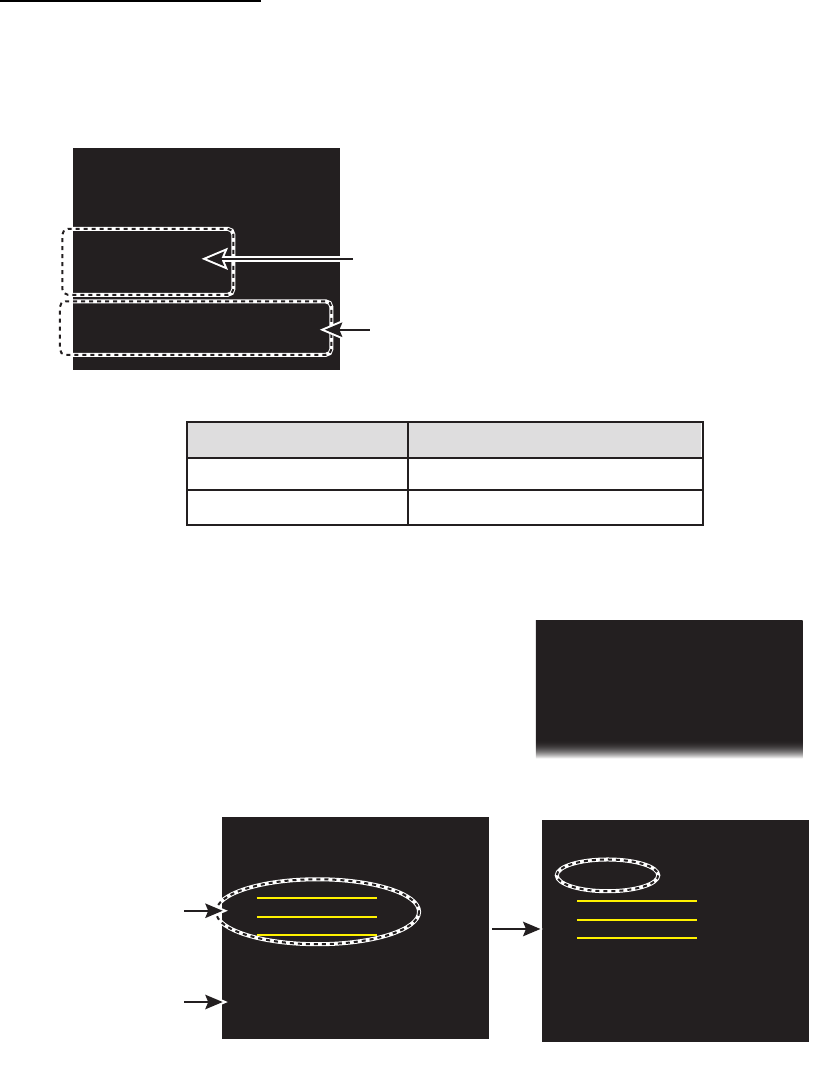
1. OPERATION
1-63
[CAPTURE] menu items
• [DRIVE SELECT]: Click the drive [SD-1] or [SD-2] to use. The [SD-1] is upper slot
and [SD-2] is lower.
• [DRIVE INFO]: Confirm the number of screen shots saved and the remaining
capacity of the SD card selected at [DRIVE SELECT].
• [DELETE CAPTURE DATA]: Delete the selected files. You can select more than
one file to delete.
• [REMOVE EXTERNAL MEDIA]: Select the SD card ([SD-1] or [SD-2]) to remove
from the card slot safely.
Note: Select the same card as the card selected on the [DRIVE SELECT] menu.
1) Click the data group including files to delete,
[MANUAL DATA], [AUTO (FAST) DATA] or
[AUTO (NORMAL) DATA].
2) Select the files to delete. The yellow lines
appear under the names of selected files.
3) Select [DELETE].
[DRIVE INFO]
1 BACK
2 DRIVE INFO
THE NUMBER OF FILES
NORMAL 0
FAST 0
MANUAL 0
USED 32KB(0. 0%)
AVAILABLE 7. 28GB(100%)
[NORMAL]: Auto captured files at the specified
interval in the [INTERVAL] menu.
[FAST]: Auto captured files at 10 seconds
interval.
[MANUAL]: Manual captured files.
[USED]: Used capacity.
[AVAILABLE]: Remaining capacity
The duration to save the captured files depends on the capacity of an SD card.
16 GB Latest 24 hours
8 GB
Capacity of SD card
Latest approx. 21 hours
Duration (for blank SD card)
[DELETE CAPTURE DATA]
1 BACK
2 [MANUAL DATA]
3 [AUTO(FAST) DATA]
4 [AUTO(NORMAL) DATA]
[MANUAL DATA(1/2)]
1 BACK(LONG=TOP)
2 DELETE
0000000M.BMP
0000001M.BMP
0000002M.BMP
0000003M.BMP
0000004M.BMP
0000005M.BMP
0 NEXT(LONG=TOP)
[MANUAL DATA(1/2)]
1 BACK(LONG=TOP)
2 DELETE
0000000M.BMP
0000001M.BMP
0000002M.BMP
0000003M.BMP
0000004M.BMP
0000005M.BMP
0 NEXT(LONG=TOP)
Click the
files to
delete
Click to go to
next page.
(Long press
to go to top
page.)
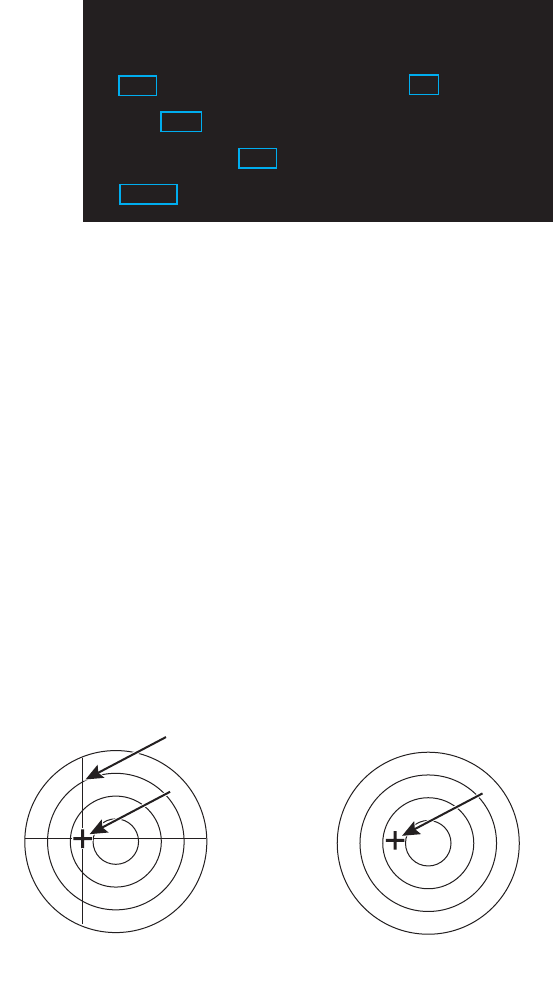
1. OPERATION
1-64
1.37.4 How to customize the operation
You can customize the operation
on the [OPERATION] menu.
Open [MAIN MENU], click
[CONFIGURATION]. Then click
[OPERATION] to open the
[OPERATION] menu.
[REF POINT]: The reference point for measurements (range, bearing, etc.)
and markers (heading line, stern mark, etc.) can be antenna
point or consistent common reference point (CCRP), which is
a location on own ship to which all horizontal measurements,
for example range, bearing, relative course, relative speed,
closest point of approach (CPA) or time to closest point of
approach (TCPA), are normally referenced. Select reference
point, [ANT] or [CCRP], as appropriate.
[KEY BEEP]: A beep sounds when a keying sequence has been correctly
executed.
[OFF]: No key beep
[LOW], [MID], [HIGH]: Loudness of key beep
[OWN SHIP VECTOR]: Select what the own ship vector displays.
[OFF]: No own ship vector
[COURSE]: Vector shows course.
[HEADING]: Vector shows heading direction.
[CURSOR SIZE]: Select the size of the cursor, [SMALL] or [LARGE].
[GUIDANCE]: See paragraph 1.37.1.
[TOUCH-PAD]: Touch pad settings.
[TOUCH-PAD]: Activate or deactivate the touch-pad.
[SENSITIVITY]: Adjust the sensitivity of the touch-pad
operation. [5] is the highest sensitivity.
[POINTING-DEVICE]: Pointing device (mouse) settings.
[POINTING-DEVICE]: Activate or deactivate the pointing
device.
[SENSITIVITY]: Adjust the sensitivity of the pointing device
operation. [5] is the highest sensitivity.
[OPERATION]
1 BACK
2 REF POINT
ANT /CCRP
3 KEY BEEP
OFF /LOW/MID/HIGH
4 OWN SHIP VECTOR
OFF /COURSE/HDG
5 CURSOR SIZE
SMALL /LARGE
6 GUIDANCE
OFF /ON
7 [TOUCH-PAD]
8 [POINTING-DEVICE]
[LARGE]
(Cursor with cursor lines)
CursorCursor
Cursor lineCursor line
CursorCursor
[SMALL]
(Cursor only)
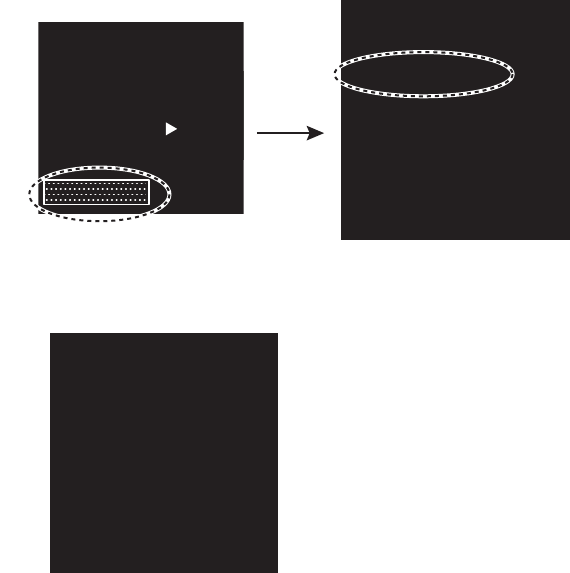
1. OPERATION
1-65
1.37.5 Transmit time
ON time, TX time and TRON time are shown on the stand-by display. You can also
show these values by using the Transmit icon.
1. Right-Click the transmit icon ([TX] or [STBY]) to open the [TX STBY] menu.
2. Click [PROPERTY] to open the [PROPERTY] window.
• [ON TIME]: Total operation time
• [TX TIME]: Total transmission time
• [TRON TIME]: Total magnetron usage time
Transmit icon
(at the top left corner on the screen)
Right-
click
SEA
ROT
RUDDER
4 /1
NM
HEAD-UP
TX
OFFCENT
HDG
A
M1
OFF
[TX STBY]
1 BACK
2 [PROPERTY]
[PROPERTY]
1 BACK
ON TIME
000013. 5H
TX TIME
000011. 9H
TRON TIME
000011. 9H
1. OPERATION
1-66
This page is intentionally left blank.
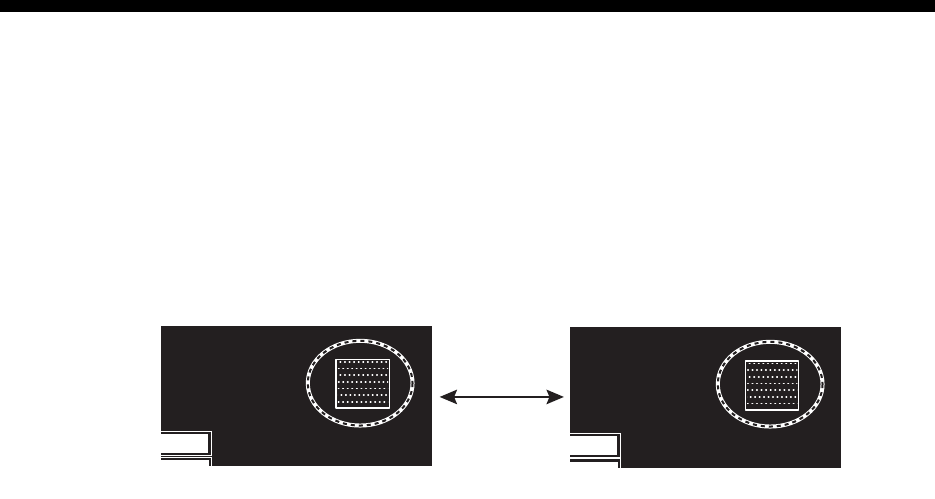
2-1
2. TARGET TRACKING (TT)
The Target Tracking function requires the heading data and ship’s speed data.
2.1 TT Display On/Off
To show or hide the TT display, click the [TT] icon at the bottom left corner on the
screen.
[TT OFF]: Deactivates TT.
[TT ON]: Activates TT.
The plotting symbol is drawn by broken circles during the initial acquisition stage. A
vector appears in about one minute after acquisition indicating the target's motion
trend. If the target is consistently detected for three minutes, the plotting symbol
changes to a solid circle. If acquisition fails, the target plotting symbol blinks and
disappears shortly.
►AZ1 ►
AZ2 ►
ALR1 ►
ALR2 ►
HL OFF
TT
OFF►
TT
OFF►LIST
EBL1
1
2
>
EBL2
8
NAV
0
G
RN
B
LK
D
-GRN
50
15
►AZ1 ►
AZ2 ►
ALR1 ►
ALR2 ►
HL OFF
TT
ON ►
TT
ON ►LIST
EBL1
1
2
>
EBL2
8
NAV
0
G
RN
B
LK
D
-GRN
50
15
[TT]: OFF [TT]: ON
Click
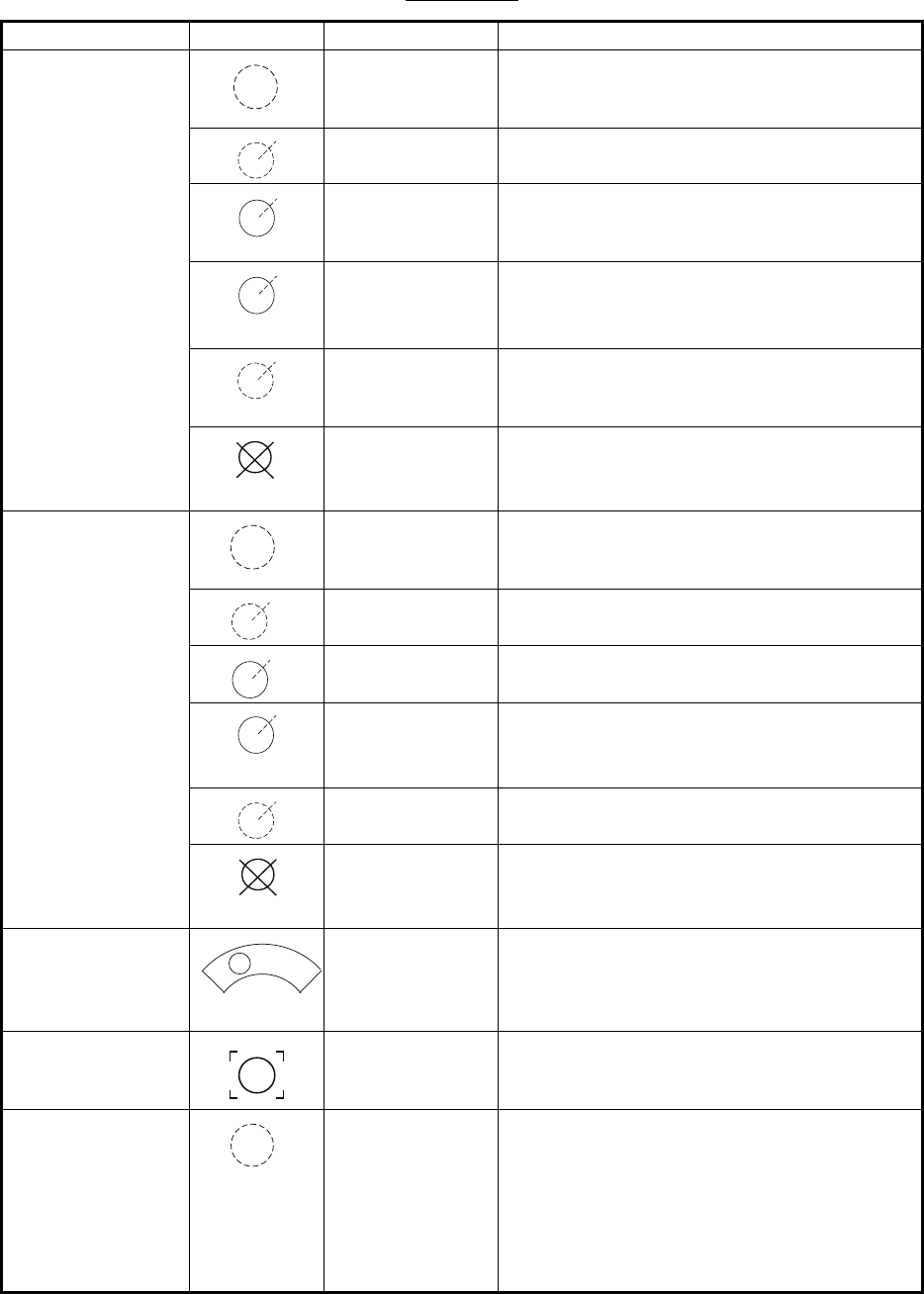
2. TARGET TRACKING (TT)
2-2
TT symbols
Symbol Status Remarks
Automatically
acquired
targets
Initial stage Broken circles enclose an echo to indicate
the target under acquisition and initial stage
of tracking, before steady-state tracking
Within one minute after acquisition (vector
still unreliable).
Steady tracking Solid circle with vector indicating steady
state tracking (within three minutes after
acquisition).
CPA alarm Plotting symbol (red) flashes to indicate the
target whose CPA or TCPA is less than the
CPA alarm setting.
CP A a l a r m
acknowledge
Shown in red and flashing. The flashing
stops after CPA/TCPA alarm is
acknowledged.
Lost target A red X is put on the TT symbol to indicate
that it is a lost target. Flashing stops after lost
target alarm is acknowledged.
Manually acquired
targets (the width
of the circle for
"steady tracking"
TT is thicker than
that of the
automatically
acquired target.)
Initial stage Plotting symbol selected for a target
acquired manually is shown in bold
broken lines.
Within one minute after acquisition
(vector still unreliable).
Steady tracking Manual plotting symbol in a bold solid circle
(within three minutes after acquisition).
CPA alarm Plotting symbol (red) flashes to indicate the
target whose CPA or TCPA is less than the
CPA alarm setting.
CP A a l a r m
acknowledge
Flashing stops after CPA/TCPA alarm is
acknowledged.
Lost target A red X is put on the TT symbol to indicate
that it is a lost target. Flashing stops after lost
target alarm is acknowledged.
Acquisition zone On target
p a s s i n g t h r o u g h
operator-set
acquisition zone
Symbol is red and flashing.
Target selected
for data readout
On selected
target
Target selected data to display its data
(range, bearing, course, speed, CPA, TCPA,
BCR, BCT, etc.).
Reference target On reference
target
Used to calculate own ship’s
over-the-ground speed (echo-referenced
speed) for ground stabilization.
(flashing)
(flashing)
(flashing)
(flashing)
(flashing)
R
A
fter three
minutes,
changes to
٤
R
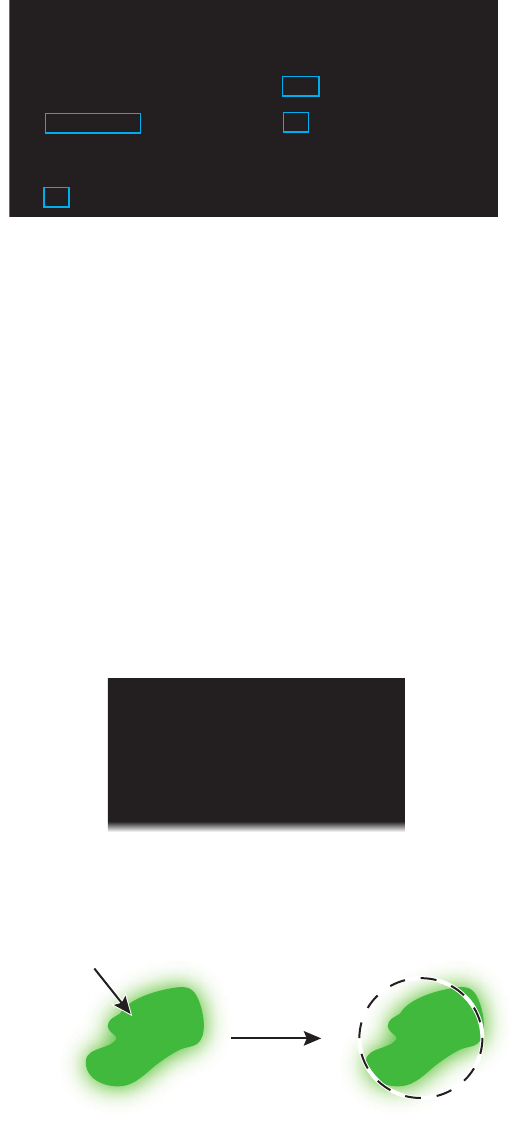
2. TARGET TRACKING (TT)
2-3
2.2 How to Acquire and Track Targets
This radar can acquire a maximum of 100 targets, the number of automatically and
manually acquired targets determined by the [TT TARGET MENU] setting.
1. Right-click the [TT] icon to show the [TT TARGET MENU] window.
2. Click [TT SELECT] then the distribution between manually and automatically
acquired targets.
[MANUAL 100]: 100 for manual tracking
[AUTO 25]: 25 for automatic tracking, 75 for manual tracking
[AUTO 50]: 50 for automatic and manual tracking
[AUTO 75]: 75 for automatic tracking, 25 for manual tracking
[AUTO 100]: 100 for automatic tracking
3. Click outside the menu window to close the menu.
2.3 Manual Acquisition
You can acquire targets manually as follows:
1. Right-click anywhere in the radar display to open [CURSOR MENU].
2. Click [ACQUIRE].
3. Click the target to acquire. You can select several targets by clicking
consecutively.
4. Right-click to quit.
[TT TARGET MENU]
1 BACK
2 TT SELECT
MANUAL 100/
AUTO 25/
AUTO 50/
AUTO 75/
AUTO 100
3 ALL CANCEL
NO /YES
4 REF TT VECTOR
OFF/ON
5 ACK LOST TARGETS
NO/YES
6 [TT LOST FILTER]
[CURSOR MENU]
1 BACK
2 ACQUIRE
3 REF MARK
4 OFFCENTER
5 EBL OFFSET
EchoEcho
Acquired
Click
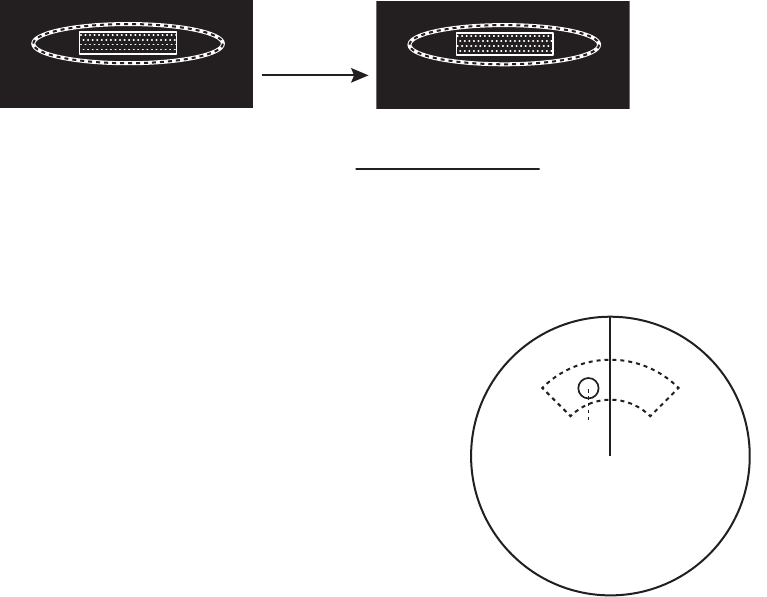
2. TARGET TRACKING (TT)
2-4
2.4 Automatic Acquisition
Targets which enter an acquisition zone (two zones possible) are automatically
acquired. Set an acquisition area as follows:
2.4.1 How to set an acquisition zone
Note: The acquisition zone can not be set within 3 NM from own ship.
1. Click the [AZ1] icon. The [AZ1] icon now reads "AZ1 SET".
2. Click the point A.
3. Click the point B. The [AZ1] icon now reads
"AZ1 WORK".
Note: [AZ2] can be set when [AZ1] is active.
The dashed lines are longer on [AZ2].
2.4.2 How to sleep an acquisition zone
1. Click the appropriate [AZ] icon.
2. Click the [AZ] icon to change from [AZ1 (2) WORK] to [AZ1 (2) SLP].
The acquisition zone disappears from the screen. To reactivate and display the
acquisition zone, repeat this procedure to display [AZ1 (2) WORK].
2.4.3 How to delete an acquisition zone
1. Click the appropriate [AZ] icon.
2. Press and hold down the left button until the [AZ] icon goes blank. The acquisition
zone is deleted from the screen.
Note: If both acquisition zones are the active [AZ1] can not be deleted unless the
[AZ2] is deleted.
[AZ1]: Acquisition zone 1 “SET” appears.
[
AZ1
]: No acquisition zone.
[
AZ1 SET
]: Set acquisition zone.
[
AZ1 WORK
]: Activate acquisition zone.
[
AZ1 SLP
]: Sleep acquisition zone.
Acquisition zone status
R
L 2-3 ►
HO
N
T
AZ1 ►
AZ2 ►
ALR1 ►
ALR2 ►
TT
ON ►LIST
EBL1 12
GRN
BLK
D
-
GRN
DOCK OFF
R
L 2-3 ►
HO
N
T
AZ1 SET ►
AZ2 ►
ALR1 ►
ALR2 ►
TT
ON ►LIST
EBL1 12
GRN
BLK
D
-
GRN
DOCK OFF
Click
A
B
Target in acquisition
zone is red and flashing.
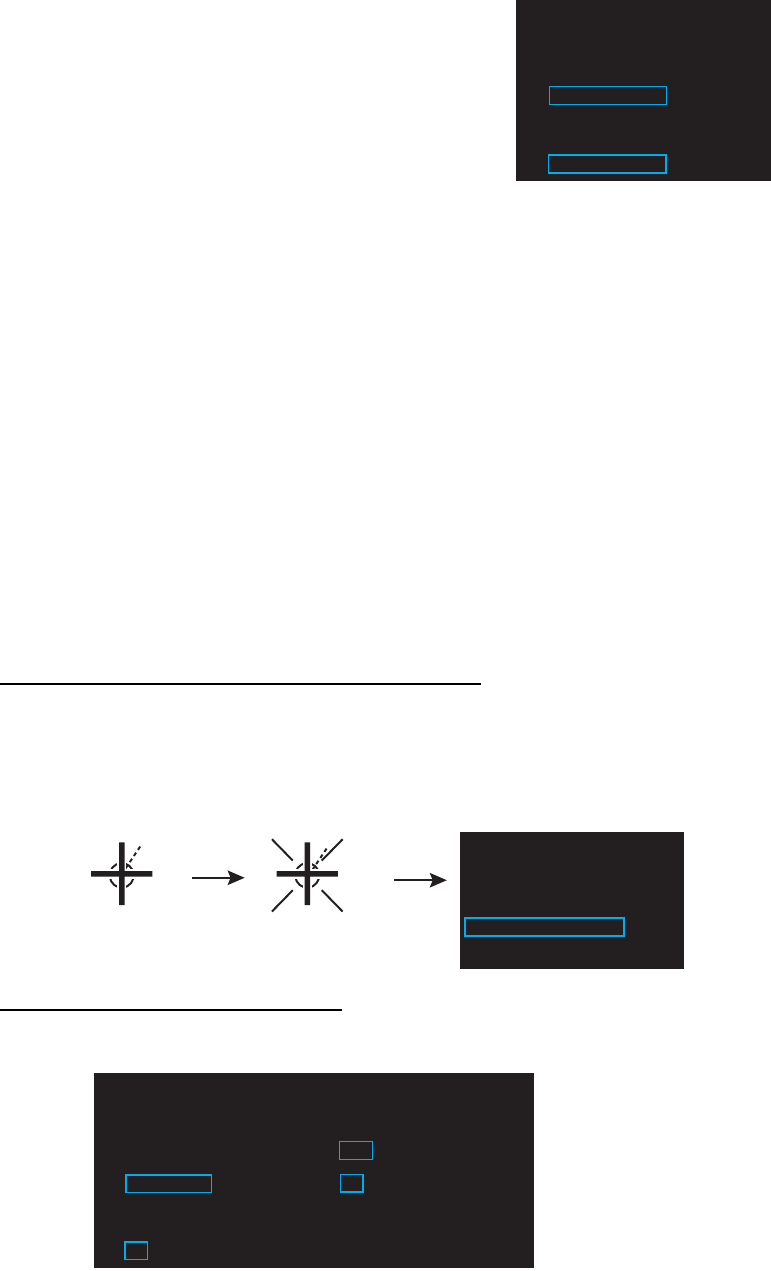
2. TARGET TRACKING (TT)
2-5
2.4.4 Acquisition zone reference
1. Open [MAIN MENU], click [TT.AIS].
2. Click [ACQUIRE ZONE].
3. Click [AZ STAB] then the acquisition zone
reference as appropriate.
[STAB NORTH]: Acquisition zone is fixed to North.
[STAB HEADING]: Acquisition zone keeps position related to your ship.
4. Click [POLYGON STAB] then the acquisition zone shape and stabilization as
appropriate.
[OFF]: Acquisition zone is a sector; number of points is limited to four. Stabilized
against land.
[STAB GND]: Polygon having 3-10 points. Stabilized against ground.
[STAB NORTH]: Polygon having 3-10 points. Stabilized against north.
[STAB HEADING]: Polygon having 3-10 points. Stabilized against heading.
5. Click outside the menu window to close the menu.
2.5 How to Stop Tracking a Target
You can stop tracking specific targets or all targets.
How to cancel tracking on individual targets
1. Place the cursor (+) on the target. The mark (×) flashes behind the target.
2. Right-click the target to show the [TT] window.
3. Click [TARGET CANCEL] to stop tracking the target.
How to stop tracking all targets
1. Right-click the [TT] icon to show the [TT TARGET MENU].
2. Click [ALL CANCEL].
3. Click [YES].
4. Click outside the menu window to close the menu.
[ACQUIRE ZONE]
1 BACK
2 AZ STAB
STAB NORTH/
STAB HEADING
3 POLYGON STAB
OFF/STAB GND/
STAB NORTH/
STAB HEADING
[TT]
1 BACK
2 TARGET DATA
3 TARGET CANCEL
Place the cursor (+).
Right-
click
Flashing mark (×),
with TT number
01
[TT TARGET MENU]
1 BACK
2 TT SELECT
MANUAL 100/
AUTO 25/
AUTO 50/
AUTO 75/
AUTO 100
3 ALL CANCEL
NO /YES
4 REF TT VECTOR
OFF/ON
5 ACK LOST TARGETS
NO/YES
6 [TT LOST FILTER]
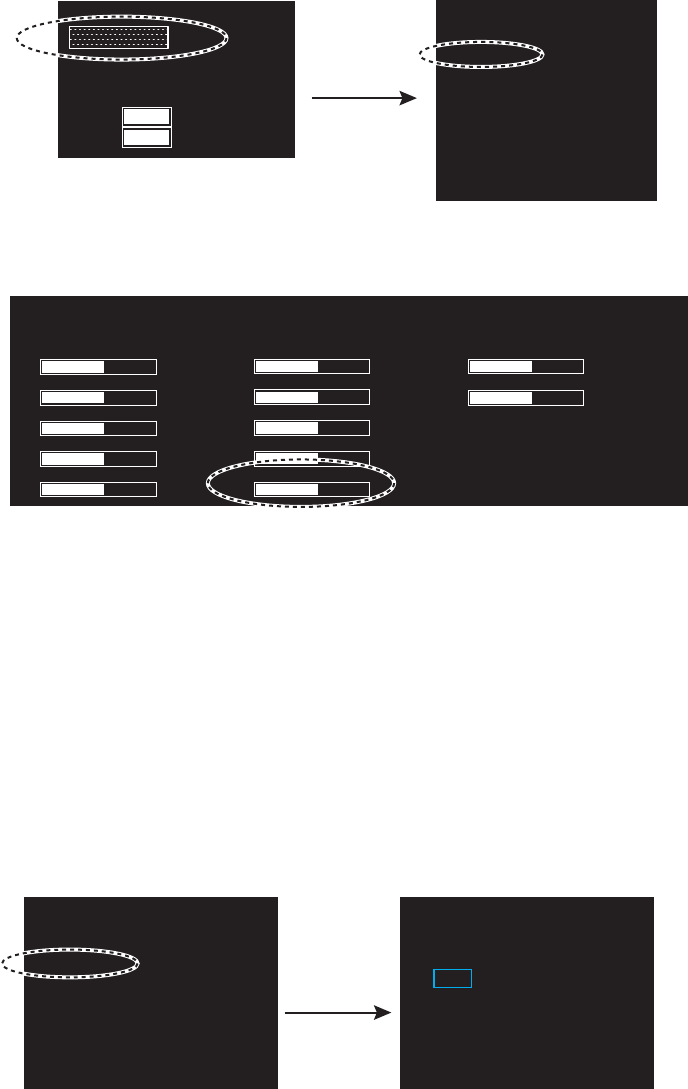
2. TARGET TRACKING (TT)
2-6
2.6 TT Symbol Attributes
2.6.1 TT symbol brilliance
1. Right-click the [BRL] icon to show the [BRILL MENU] window.
2. Click [EDIT].
3. Click [BRILL DETAIL] to show the [BRILL DETAIL] window.
4. Click [TT SYMBOL].
5. Click the slide bar for [TT SYMBOL] then set the brilliance as appropriate with the
setting knob.
6. Click outside the menu window to close the menu.
2.6.2 TT symbol color
You may select the color of the TT symbol as follows.
1. Open [MAIN MENU], click [TT.AIS].
2. Click [SYMBOL].
3. Click [TT].
4. Click [SYMBOL COLOR].
5. Click the desired color.
[GRN]: green, [BLU]: blue, [CYA]: cyan, [MAG]: magenta, [WHT]: white
6. Click outside the menu window to close the menu.
(at the bottom left corner on the screen)
Right-click
BRL 2-3 ►
ECHO
B-IN
OUT
MONI
PANL
AZ1 ►
AZ2 ►
ALR1 ►
ALR2 ►
HL OFF
TT
ON
>
GRN
BLK
D-GRN
50
15
[BRILL MENU]
1 BACK
2 [EDIT]
3 [PRESET]
[BRILL DETAIL]
1 BACK
2 CHARACTER
3 CURSOR
4 ECHO
5 TRAIL
6 HEADING LINE
7 FIXED RING
8 GYRO RING
9 EBL
10 VRM
11 TT SYMBOL
12 AIS SYMBOL
11 MARK/LINE
Click
[TT]
1 BACK
2 SYMBOL COLOR
GRN/BLU/CYA/MAG/WHT
[SYMBOL]
1 BACK
2 [TT]
3 [AIS]
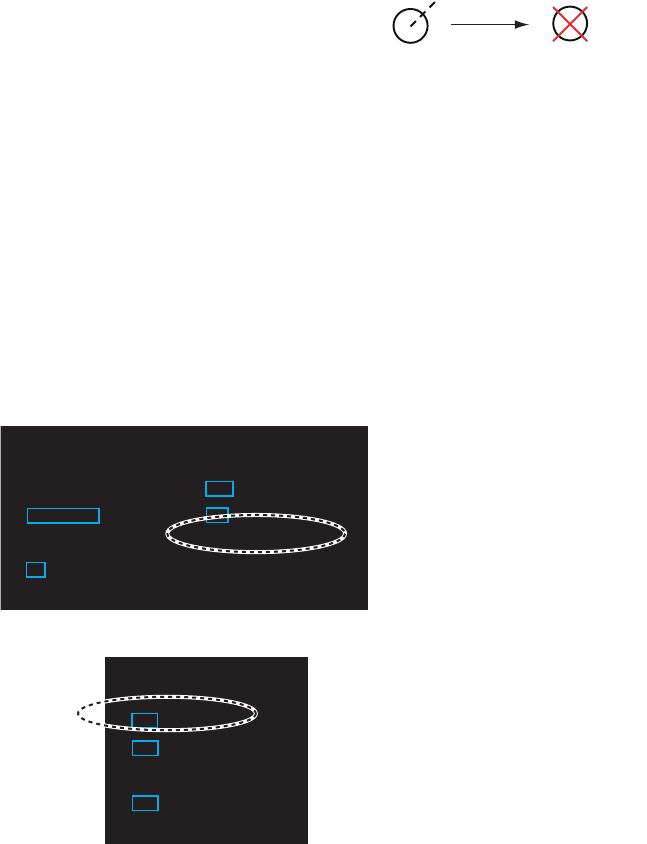
2. TARGET TRACKING (TT)
2-7
2.7 Lost Target
Targets not detected in five consecutive scans become
"lost targets." A lost target is shown in the display with
a flashing red "X". Flashing stops after the lost target
alarm is acknowledged.
If you are in an area where tracked targets are lost fre-
quently you may want to disable the lost target alarm against tracked targets by
maximum range or minimum speed.
2.7.1 Lost target filter
You can set the lost target alarm to sound against lost TTs that meet a specific range
or ship speed. Set the criteria as shown below.
1. Right-click the [TT] icon.
2. Click [TT LOST FILTER].
3. Click [TT LOST FILTER].
4. Select how to enable or disable the lost target alarm.
[OFF]: Disable the alarm.
[FILT]: Get the alarm against the targets whose criteria meet the settings on the
[TT LOST FILTER] menu.
[ALL]: Get the alarm against all lost targets.
5. Click [MAX RANGE VALUE] and [MIN SHIP SPEED VALUE] as appropriate,
referring to the description below.
[MAX RANGE], [MAX RANGE VALUE]: Any TT lost target beyond the range set
here will not trigger the lost target alarm.
[MIN SHIP SPEED], [MIN SHIP SPEED VALUE]: Any TT lost target slower than
this setting will not trigger the lost target alarm.
Note: Reference targets are not affected by this filter.
2.7.2 How to acknowledge a lost target
1. Right-click the [TT] icon to show [TT TARGET MENU].
2. Click [ACK LOST TARGETS].
3. Click [YES]. All lost targets disappear from the screen.
Lost target
(flashing)
[TT TARGET MENU]
1 BACK
2 TT SELECT
MANUAL 100/
AUTO 25/
AUTO 50/
AUTO 75/
AUTO 100
3 ALL CANCEL
NO /YES
4 REF TARGET VECTOR
OFF/ON
5 ACK LOST TARGETS
NO/YES
6 [TT LOST FILTER]
[TT LOST FILTER]
1 BACK
2 TT LOST FILTER
OFF/FILT/ALL
3 MAX RANGE
OFF/ON
4 MAX RANGE VALUE
03.0 NM
5 MIN SHIP SPEED
OFF/ON
6 MIN SHIP SPEED VALUE
00.0kn
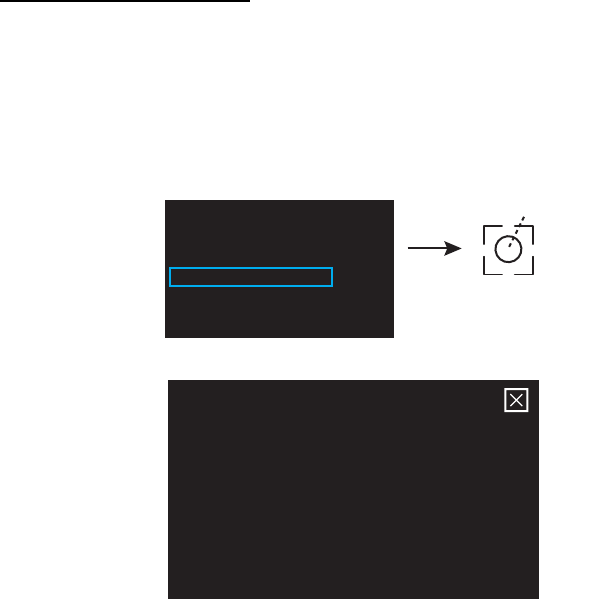
2. TARGET TRACKING (TT)
2-8
2.8 TT Data
The TT target list provides a comprehensive data display of all TT targets being
tracked.
How to display TT data
1. Place the cursor (+) on the target to show the target data. The mark (×) flashes
behind the target.
2. Right-click the target to show the [TT] window.
3. Click [TARGET DATA] to show the [TT INFO] window. The selected target is
enclosed in a broken square.
[TT INFO] window
4. Click outside the menu window to close the menu.
[NO.]: Target No. [COG]: Course over ground
[RNG]: Range [CPA]: Target’s CPA
[BRG]: Bearing [TCPA]: Target’s TCPA
[SOG]: Speed over ground
[TT]
1 BACK
2 TARGET DATA
3 TARGET CANCEL
Target,
with broken square
01
[TT INFO]
NO. : 001
RNG : 35. 7NM
BRG : 036. 0° T
SOG : 5. 2kn
COG : 324. 0° T
CPA : 3. 15NM
TCPA : 52m30s
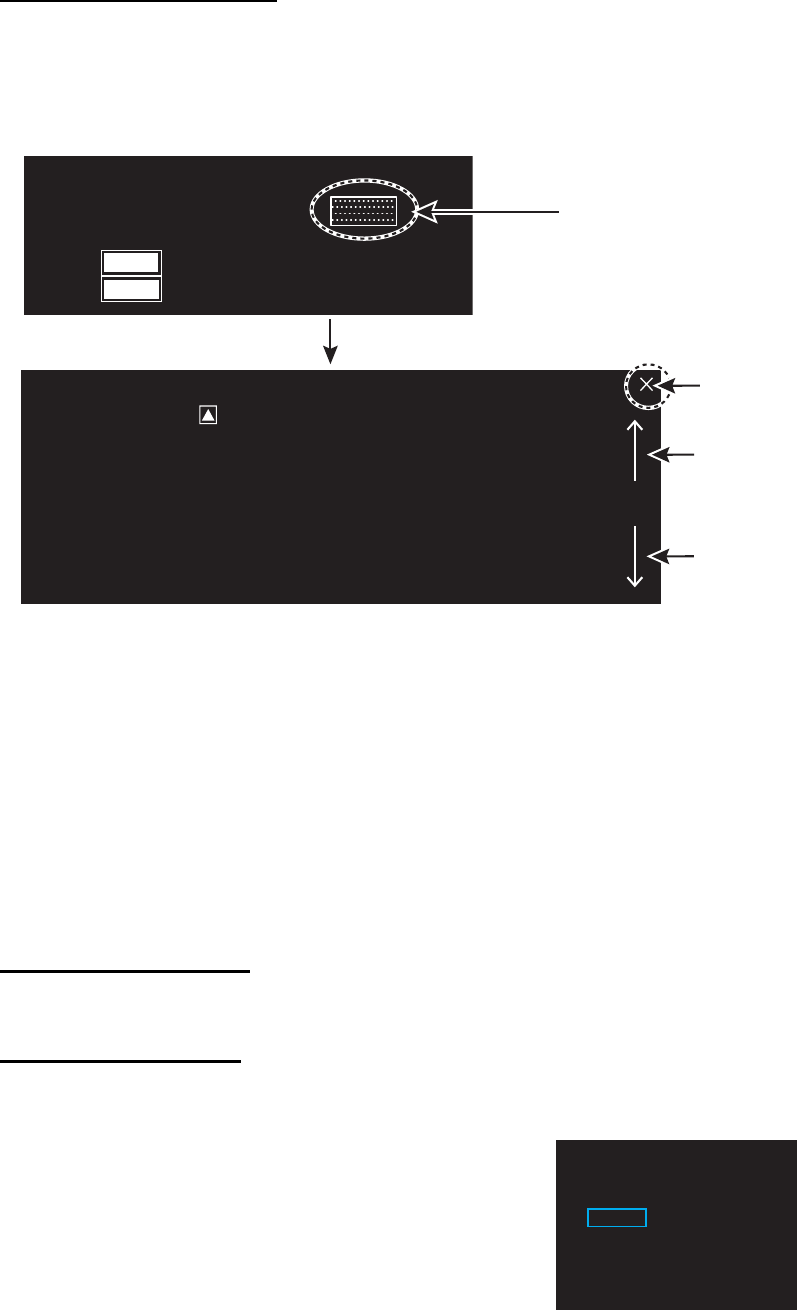
2. TARGET TRACKING (TT)
2-9
2.9 TT List
How to display the TT list
The TT list provides the range, bearing, CPA and TCPA of all tracking targets.
To display the TT list, click the [LIST] icon for TT at the bottom left corner on the screen
to show the [TT LIST] window.
To close the [TT LIST] window, click the close button at the top right corner of the
window.
[No.]: Target number
[RANGE], [BEARING]: Range and Bearing from own ship to the selected target with
suffix "T" (True) or "R" (Relative).
[CPA], [TCPA]: CPA (Closest Point of Approach) is the closest range a target will
approach to own ship. TCPA is the time to CPA. Both CPA and TCPA are
automatically calculated. A negative TCPA value means that you have already passed
the CPA and the target is going away from own ship.
How to display TT data
Click the target on [TT LIST] to show the [TT INFO] window. See section 2.8.
How to sort the TT list
You may sort the TT list by RANGE, CPA, TCPA as follows.
1. Right-click the [LIST] icon for TT to show the
[TT-LIST] window.
2. Click [SORT BY].
3. Click the sorting item desired, by [RANGE],
[CPA] or [TCPA].
4. Click outside the menu window to close the menu.
BRL
2
-
3
►
ECHO
B-IN
OUT
MONI
PANL
AZ1
►
AZ2
►
ALR1
►
ALR2
►
HL OFF
TT
ON
►
LIST
►
EBL1 123.4°
>
EBL2 82.9°
NAV 0.160
T
T
N
M
GRN
BLK
D-GRN
50
15
[LIST] icon for TT
[TT LIST]
No. RANGE BEARING CPA TCPA
001 9. 60NM 058. 8°T 0. 00NM 00m00s
002 19. 2NM 059. 0°T 0. 00NM 00m00s
TT list
Close
button
Page up
button
Page down
button
Click
[TT-LIST]
1 BACK
2 SORT BY
RANGE /CPA/TCPA
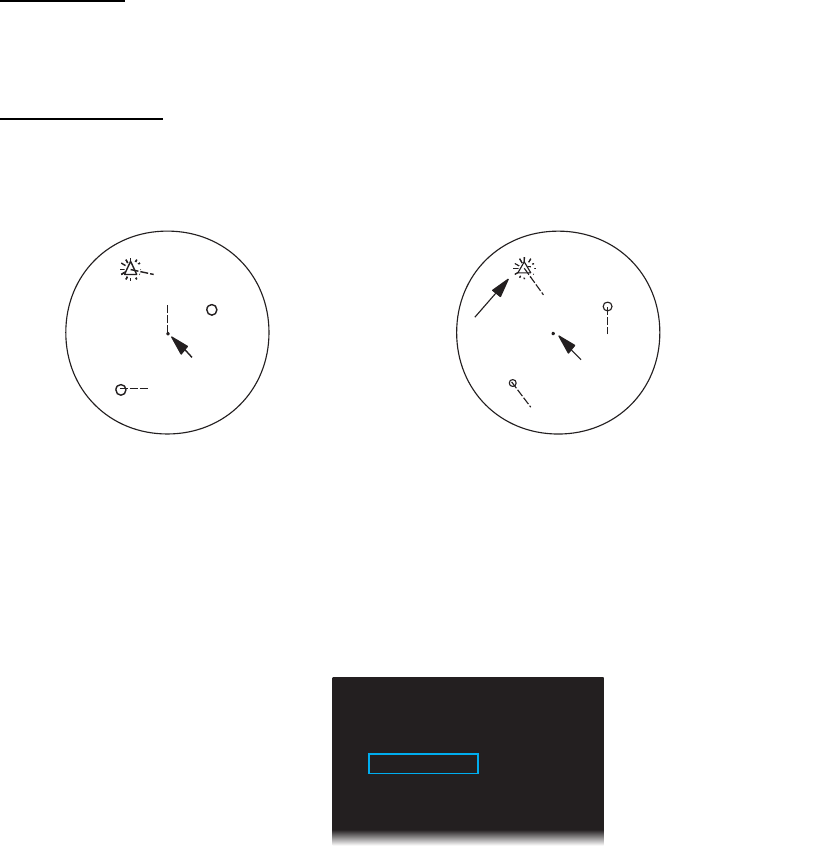
2. TARGET TRACKING (TT)
2-10
2.10 Vector Modes
Target vectors can be displayed relative to own ship's heading (Relative) or north
(True).
2.10.1 Description of vectors
Sea stabilization is a mode where own ship and all targets are referenced to the sea
using a compass heading and single-axis log water speed inputs. Ground stabilization
is a mode where own ship and all targets are referenced to the ground using the
ground track or set and drift inputs. If the accuracy seems unsatisfactory, enter set and
drift corrections.
True vector
Own ship and other ships move on the display at their true speeds and courses. This
mode is useful for distinguishing moving targets from stationary ones.
Relative vector
Other ships move relative to your ship. This mode is useful for finding ships on a
collision course with your ship. A ship whose vector passes through your ship's
position is on a collision course.
2.10.2 Vector mode and length
Vectors may be displayed in true or relative mode. Vector time (or the length of
vectors) can be set from 30 sec, 1 to 6 minutes.
1. Open [MAIN MENU], click [TT.AIS].
2. Click [VECTOR].
3. Click [VECTOR MODE].
4. Click the appropriate mode.
[VECTOR REL]: Relative mode
[VECTOR T-G], [VECTOR T-S]: True mode
5. Click [VECTOR TIME].
6. Select the time (30 sec to 6 min) with the setting knob.
7. Click outside the menu window to close the menu.
True vectors in head-up mode Relative vectors in head-up mode
B
Own ship
A
B
Own ship
Buoy Buoy
Target on
collision
course
Target on
collision
course
A
[VECTOR]
1 BACK
2 VECTOR MODE
VECTOR REL/VECTOR T-G*
3 VECTOR TIME
30sec
*: For SOG, [VECTOR T-G]
For STW, [VECTOR T-S]
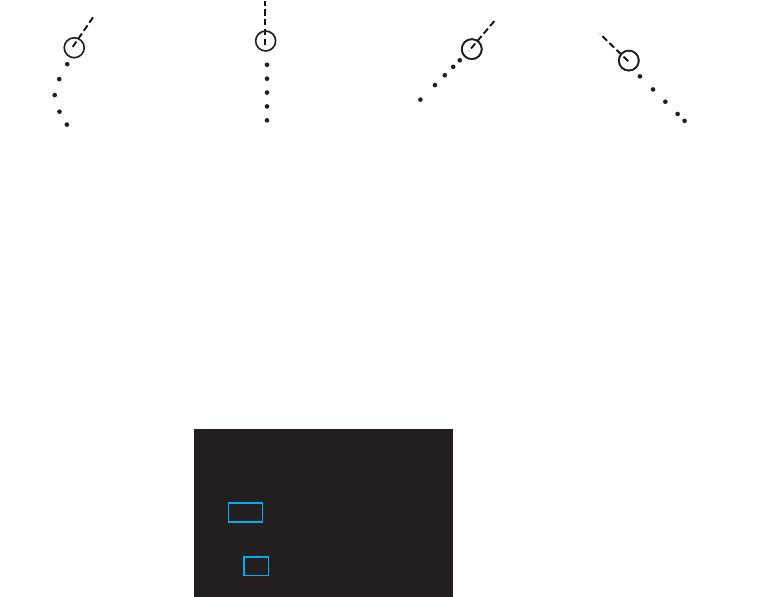
2. TARGET TRACKING (TT)
2-11
2.11 Past Position Display
Equally time-spaced dots shows the past position display marking the past positions
of any targets being tracked.
A new dot is added every minute (or at other preset time intervals) until the preset
number is reached. If a target changes its speed, the spacing will be uneven. If it
changes the course, its plotted course will not be a straight line.
Past position orientation, true or relative, is controlled with [TRAIL MODE] in the
[TRAIL] menu. See section 1.25 for the procedure.
2.11.1 How to select the dot number and interval of the past position
You may select the number of past points to display per plotting interval as follows.
1. Open [MAIN MENU], click [TT.AIS].
2. Click [PAST POSN].
3. Click [INTERVAL].
4. Click the plot interval desired (0.5 min to 6 min). Click [OFF] to erase all past
position points and deactivate the past position display.
5. Click [POINTS].
6. Click the number of dots to display, 5 or 10.
7. Click outside the menu window to close the menu.
2.11.2 Past position display mode
The display mode for the past position display is the same as that set for the TT vector.
In the true motion mode, the true vector is displayed. See paragraph 2.10.1.
(a) Ship turning (b) Ship running
straight
(c) Ship reduced
speed
(d) Ship increased
speed
[PAST POSN]
1 BACK
2 INTERVAL
OFF/0.5min/1min/2min/
3min/6min
3 POINTS
5/10

2. TARGET TRACKING (TT)
2-12
2.12 CPA/TCPA Alarm
The CPA/TCPA alarm alerts you when both the CPA and TCPA of a TT is within a
defined limit.
CPA and TCPA of the target is less than the alarm settings.
1. Open [MAIN MENU], click [ALARM].
2. Click [TT.AIS].
3. Click [CPA LIMIT].
4. Click [CPA LIMIT].
5. Click [ON].
6. Click [RANGE].
7. Select the desired distance for CPA (Setting range: 0.1 to 24 NM) with the setting
knob.
8. Click [TIME].
9. Select the desired time for TCPA (Setting range: 30 sec to 15 min) with the setting
knob.
10. Click outside the menu window to close the menu.
[CPA LIMIT]
1 BACK
2 CPA LIMIT
OFF/ON
3 RANGE
01. 0NM
4 TIME
30sec
[TT•AIS]
1 BACK
2 [CPA LIMIT]
Click
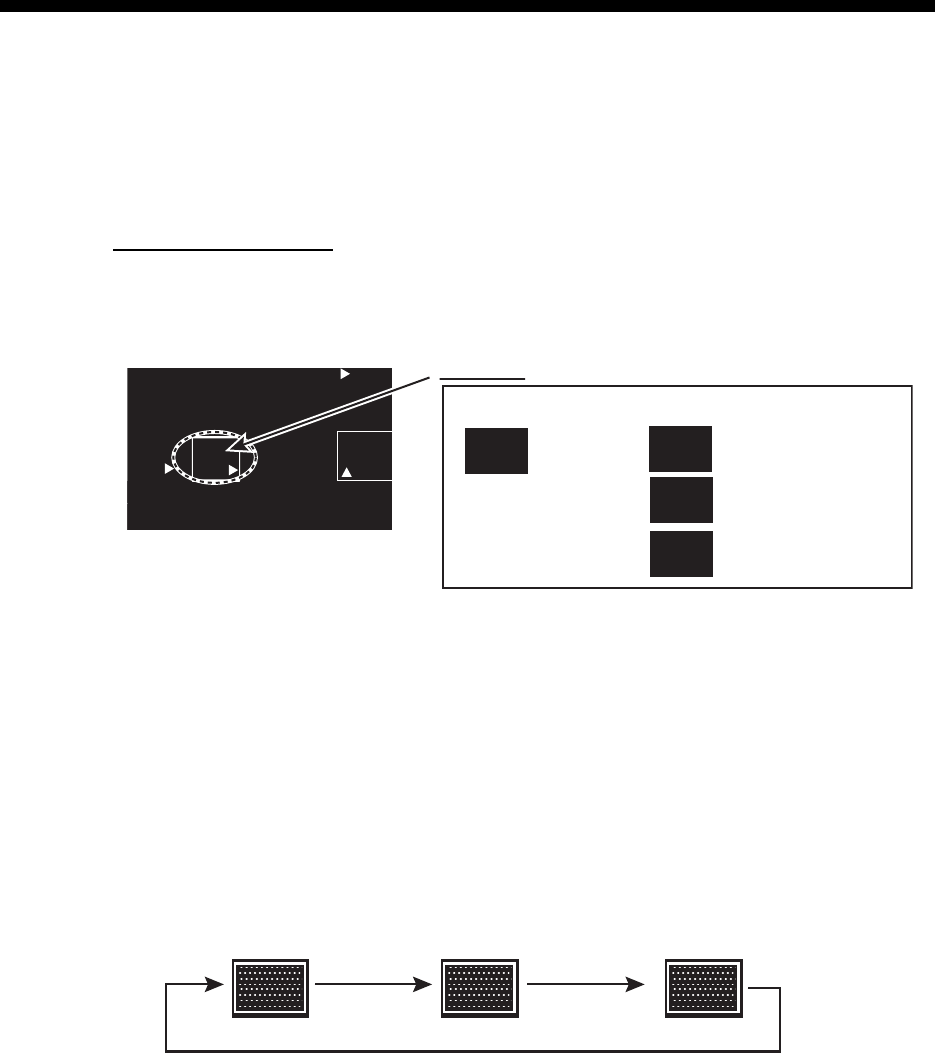
3-1
3. AIS OPERATION
The AIS (Automatic Identification System) transponder connected to this radar
exchanges all data and information required by the SOLAS 1994 with other AIS-fitted
ships. AIS information is graphically indicated together with the radar and TT
information.
When AIS is active, manual or reference speed selection is not available.
AIS Function On/Off
You may disable or enable the AIS function from the AIS icon. Long press the AIS icon
with the left button to switch function between on and off.
3.1 AIS Display On/Off
To show or hide the AIS display, click the [AIS] icon at the bottom right corner on the
screen.
When the AIS is turned on, AIS targets are marked with appropriate AIS symbol as
shown in the table below.
Note: If the CPA/TCPA alarm is generated while the setting is [AIS OFF], the AIS
target is automatically displayed and the setting in the [AIS] box becomes [AIS ALL].
[AIS OFF]: All AIS symbols are hidden, but tracking continues internally.
[AIS FIL]: AIS targets are displayed according to the criteria set with
[CPA AUTO ACTIVE] in [AIS TARGET MENU].
See section 3.10 for details.
[AIS ALL]: All AIS targets received by the AIS transponder are displayed with
symbols.
(at the bottom right corner on the screen)
R
M1
1.567
R
M2
0.160
0 160
NM
L
IST
NM
NM
MAN
MAN
MAN
TUNE MAN
GAIN
STC
RAIN
IR
ES
EA
V
TRAIL
2.50sec
01m05s
REL
ON
AIS
– – –
AIS
– – –
[AIS] icon
AIS
– – –►
AIS
FIL►
AIS Function “Off” AIS Function “On”
AIS
ALL►
AIS
OFF►
Show the filtered
AIS targets.
Show all AIS targets.
Hide all AIS targets.
AIS
OFF►
AIS
OFF►
AIS
FIL►
AIS
FIL►
AIS
ALL►
AIS
ALL►
Click Click
Click
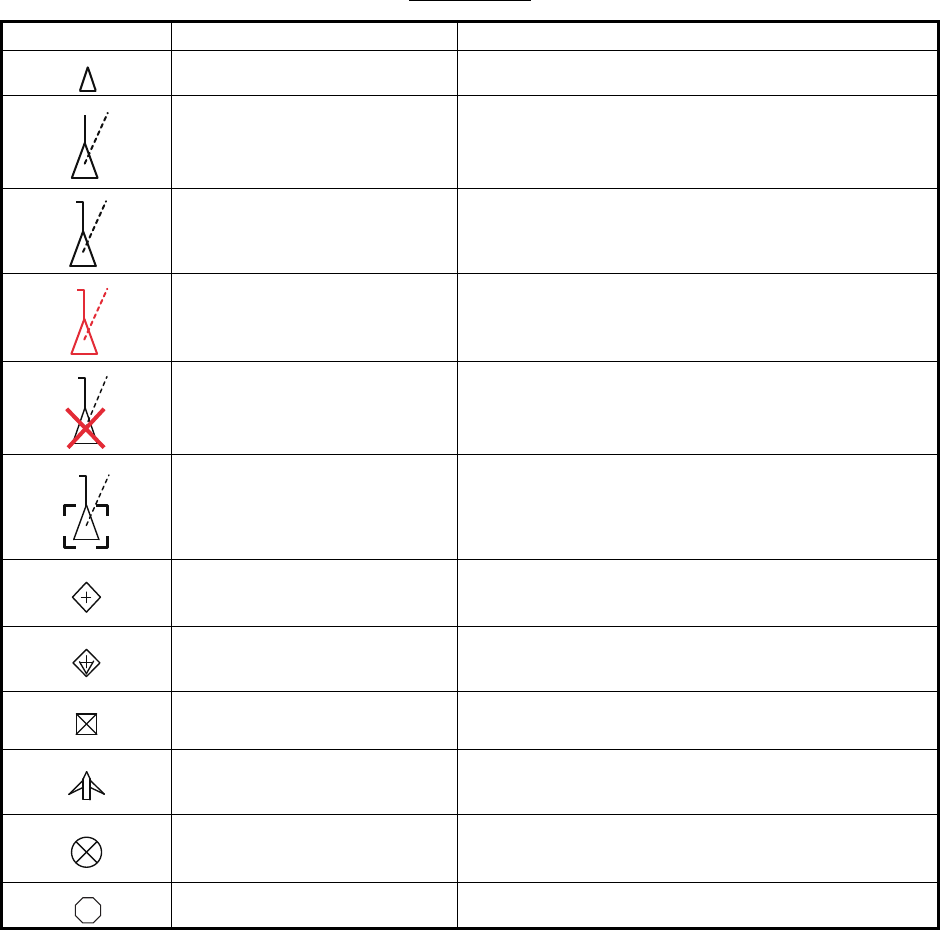
3. AIS OPERATION
3-2
AIS symbols
Symbol Status Remarks
Sleeping target Smaller triangle than an active target
Activated target Heading line, ship speed/course vectors are
displayed. Color is selectable on the menu.
Turning target A turning symbol is displayed.
Dangerous target Collision alarm symbol is displayed in red. The
symbol flashes until acknowledged.
Lost target When a target is lost, a red flashing X mark is
attached to the symbol. The symbol disappears
after acknowledgement.
Target whose data are being
displayed.
Target selected to display its data is enclosed with
a broken square.
Real AIS track sign —
Virtual AIS track sign —
AIS base station —
Airborne SAR aircraft AIS —
AIS-SART —
AIS target without heading —
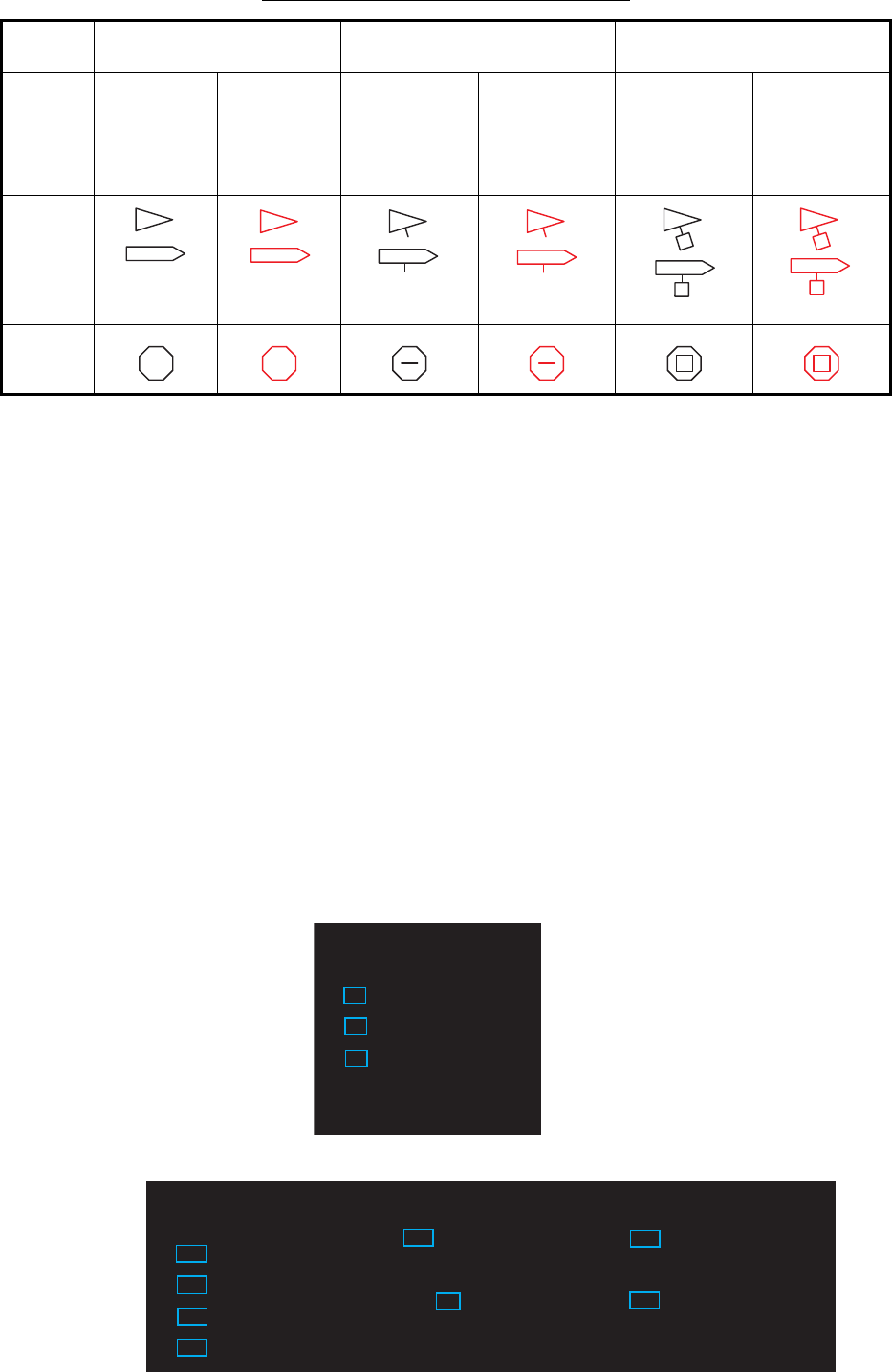
3. AIS OPERATION
3-3
AIS symbols with Blue sign, Blue cones
Note 1: The equipment continues to process AIS targets when the AIS feature is
switched off. When the AIS is again turned on, symbols are immediately displayed.
Note 2: AIS symbols are momentarily erased after the screen is redrawn when the
orientation mode is changed from the head-up mode.
Note 3: When no AIS data is received, the message "AIS RECEIVE ERROR"
appears. Check the AIS transponder.
Note 4: An AIS target is declared as lost target if it is not detected in five consecutive
reporting periods.
3.2 AIS Display Filter
If there are too many AIS targets on the screen you may wish to remove unnecessary
ones. You may remove targets by distance from own ship, speed, class and length.
For example, you might want to remove slow moving targets, as they normally do not
require close monitoring.
1. Right-click the [AIS] icon.
2. Click [AIS DISP FILTER].
Blue
sign
Not connected or
not available Not set Set
The
number
of
Blue
cones
No 1 to 3
(Red mark) No 1 to 3
(Red mark) No 1 to 3
(Red mark)
With
heading
Without
heading
(Scaled symbol)
(Scaled symbol)
(Scaled symbol)
(Scaled symbol)
(Scaled symbol)
(Scaled symbol)
[AIS TARGET MENU]
1 BACK
2 SLEEP ALL TARGETS
NO/YES
3 ACTIVATE ALL TARGETS
NO/YES
4 ACK LOST TARGETS
NO/YES
5 [AIS DISP FILTER]
6 [CPA AUTO ACTIVATE]
7 [AIS LOST FILTER]
[AIS DISP FILTER]
1 BACK
2 AIS DISP FILTER
OFF/FILT/ALL
3 CLASS A
OFF/ON
4 CLASS B
OFF/ON
5 BASE STATION
OFF/ON
6 MIN RANGE
OFF/ON
7 MIN RANGE VALUE
00.4km
8 MAX RANGE
OFF/ON
9 MAX RANGE VALUE
03.0km
10 MIN SHIP SPEED
OFF/ON
11 MIN SHIP SPEED VALUE
00.0km/h
12 MIN SHIP LENGTH
OFF/ON
13 MIN SHIP LENGTH VALUE
000m
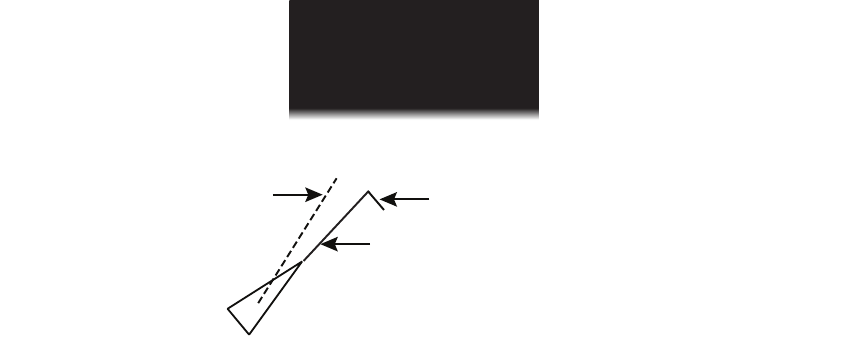
3. AIS OPERATION
3-4
3. Set item 3 to 13 referring to the description below.
[CLASS A]: Hide or show the CLASS A AIS targets.
[CLASS B]: Hide or show the CLASS B AIS targets.
[BASE STATION]: Hide or show AIS base stations.
[MIN RANGE], [MIN RANGE VALUE]: If [MIN RANGE] is set to [ON], only AIS
targets further than the range set at [MIN RANGE VALUE] are shown.
[MAX RANGE], [MAX RANGE VALUE]: If [MAX RANGE] is set to [ON], only AIS
targets nearer than the range set at [MAX RANGE VALUE] are shown.
[MIN SHIP SPEED], [MIN SHIP SPEED VALUE]: If [MIN SHIP SPEED] is set to
[ON], only AIS targets faster than the speed set at [MIN SHIP SPEED VALUE] are
shown.
[MIN SHIP LENGTH], [MIN SHIP LENGTH VALUE]: If [MIN SHIP LENGTH] is set
to [ON], only AIS targets longer than the length set at [MIN SHIP SPEED VALUE]
are shown.
4. Click outside the menu window to close the menu.
Note: An AIS target whose data is currently displayed is not affected by the filter
setting.
3.3 How to Activate Targets
3.3.1 How to activate specific targets manually
When you convert a sleeping target to an activated target, the target’s course and
speed are shown with a vector. You can easily judge target movement by monitoring
the vector.
Sleeping targets within an acquisition zone are automatically changed to activated
targets and are colored red. See section 3.5 for details.
1. Right-click the [AIS] icon to activate to show the AIS window.
2. Click [ACTIVE/SLEEP].
3. Click outside the menu window to close the menu.
3.3.2 How to activate all targets
1. Open [AIS TARGET MENU] (see step 1 of section 3.2), click [ACTIVATE ALL
TARGETS].
2. Click [YES].
3. Click outside the menu window to close the menu.
[AIS]
1 BACK
2 TARGET DATA
3 ACTIVE/SLEEP
Heading line
Turning direction (ROT)
*: Vector shows STW (speed through water) and CSE (course)
when water tracking mode is selected at the radar.
SOG (Speed over Ground) and
COG (Course over Ground)
vector*
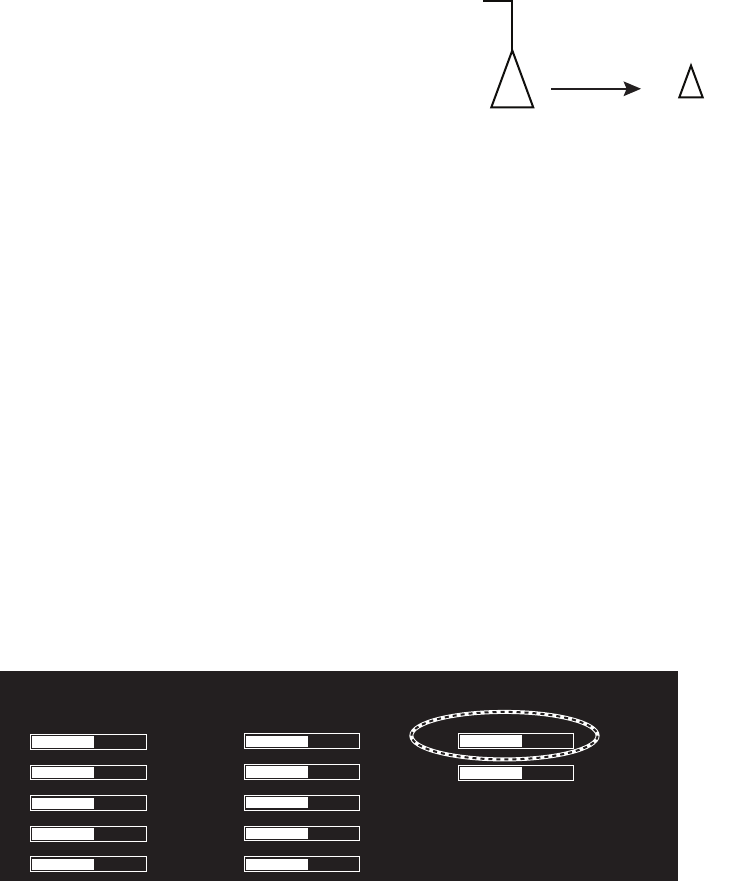
3. AIS OPERATION
3-5
3.4 How to Sleep Targets
3.4.1 How to sleep an individual target
You may “sleep” an AIS target as below when the screen becomes filled with targets,
which might prevent important radar and AIS displays from being identified. Note that
targets that have been activated automatically cannot be “slept”.
1. Right-click the AIS target to sleep to show the AIS window.
2. Click [ACTIVE/SLEEP].
3.4.2 How to sleep all targets
1. Open [AIS TARGET MENU] (see step 1 of section 3.2), click [SLEEP ALL
TARGETS].
2. Click [YES].
3. Click outside the menu window to close the menu.
3.5 AIS Symbol Attributes
You may adjust the brilliance and select the size and color of the AIS symbol.
3.5.1 AIS symbol brilliance
1. Right-click the [BRL] (brill) icon to show the [BRILL MENU] window.
2. Click [EDIT].
3. Click [BRILL DETAIL] to show the [BRILL DETAIL] window.
4. Click [AIS SYMBOL].
5. Set the brilliance as appropriate with the setting knob.
6. Click outside the menu window to close the menu.
3.5.2 AIS symbol size and color
You may select the size and color of the AIS symbol as follows.
1. Open [MAIN MENU], click [TT.AIS].
2. Click [SYMBOL].
Active AIS Sleeping
AIS
[BRILL DETAIL]
1 BACK
2 CHARACTER
3 CURSOR
4 ECHO
5 TRAIL
6 HEADING LINE
7 FIXED RING
8 GYRO RING
9 EBL
10 VRM
11 TT SYMBOL
12 AIS SYMBOL
11 MARK/LINE
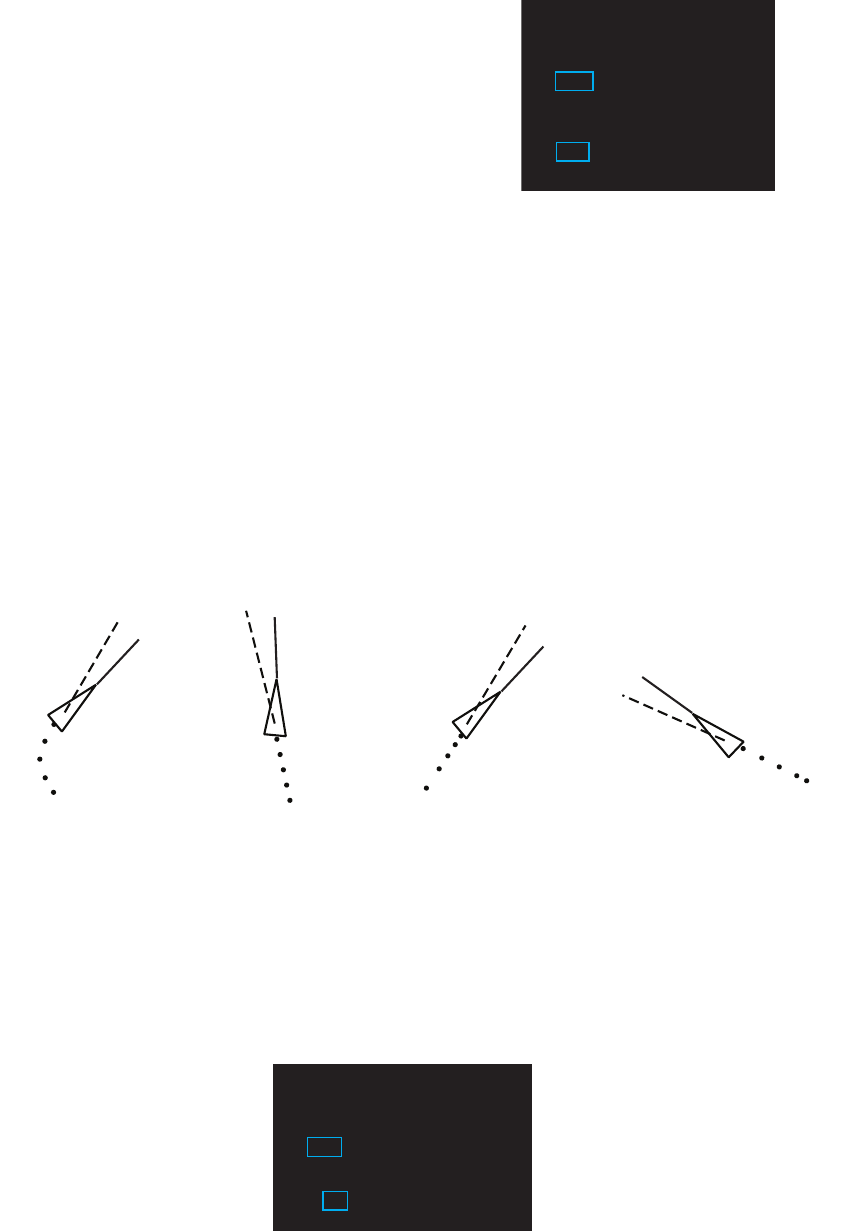
3. AIS OPERATION
3-6
3. Click [AIS] to show the [AIS] window.
4. Click [SYMBOL COLOR] then the de-
sired color.
5. Click [SCALED SYMBOL].
6. Click [OFF] or [ON] as appropriate.
[OFF]: All AIS symbols shown in same size.
[ON]: All AIS symbols are scaled according to ships’ lengths.
7. Click outside the menu window to close the menu.
3.6 Past Position Display
The past position display shows equally time-spaced dots marking past positions of
activated AIS targets. A new dot is added at preset time intervals until the preset
number is reached. If a target changes its speed, the spacing is be uneven. If it
changes course, its plotted course is not shown by a straight line.
3.6.1 How to select the number and interval of the past position
You may select the number of past points to display per plotting interval as follows.
1. Open [MAIN MENU], click [TT.AIS].
2. Click [PAST POSN].
3. Click [INTERVAL].
4. Click the plot interval desired (0.5 min to 6 min). Click [OFF] to erase all past
position points and deactivate the past position display.
5. Click [POINTS].
6. Click the number of dots to display, 5 or 10.
7. Click outside the menu window to close the menu.
[AIS]
1 BACK
2 SYMBOL COLOR
GRN/BLU/CYA/MAG/WHT
3 ROT TAG LIMIT
000.1deg/min
4 SCALED SYMBOL
OFF/ON
(a) Ship turning (b) Ship running straight (c) Ship reduced speed (d) Ship increased speed
[PAST POSN]
1 BACK
2 INTERVAL
OFF/0.5min/1min/2min/
3min/6min
3 POINTS
5/10